




Niamh Browne is a final year philosophy and art history student. She has previously written for publications such as Motley, Hot Press and the Irish Examiner. She is a part-time mad bastard.

Ronan is a 3rd year world languages student with a strong interest in political philosophy and international relations. He is passionate about education, the environment and minority rights.
Seán Enda studies Digital Cultures, but don’t ask him to explain that because he’s not so sure either. His writing has featured in many publications, including several bathroom walls
ustine Lepage (also known online as Loucoffee), is currently pursuing the MA in Arts Management and Creative Producing. Her work has been published in magazines like Sound of Brit or the Outpost Eire. She is interested in maximalism and funky gnome fashion.
Édith studies Commerce & Irish and previously worked with UCC’s University Express. She’s relying on a diet of Coke Zero, Desperate Housewives and Taylor Swift to get her through final year.
Kev live, laugh, loves long walks on the beach and is a tired designer from Cork. He has a degree in colours from CIT and in his spare time makes comic books available nationwide. Ask him about the Fungie The Dolphin conspiracy.










Lisa is a second-year BA English student and has previously written for Motley magazine in the past. She spends her time reading and writing, your typical Rory Gilmore wannabe.

Chloe is a third year English student and was previously the Gaming Editor for the University Express. She reads an unhealthy amount of books and loves her dogs a totally normal amount, she promises.

Sinéad is a final year English student who has been published in the Quarryman. She enjoys reading, writing and pretending to prepare for exams. She finds comfort in having her research tabs open on the computer while she binges Supernatural.
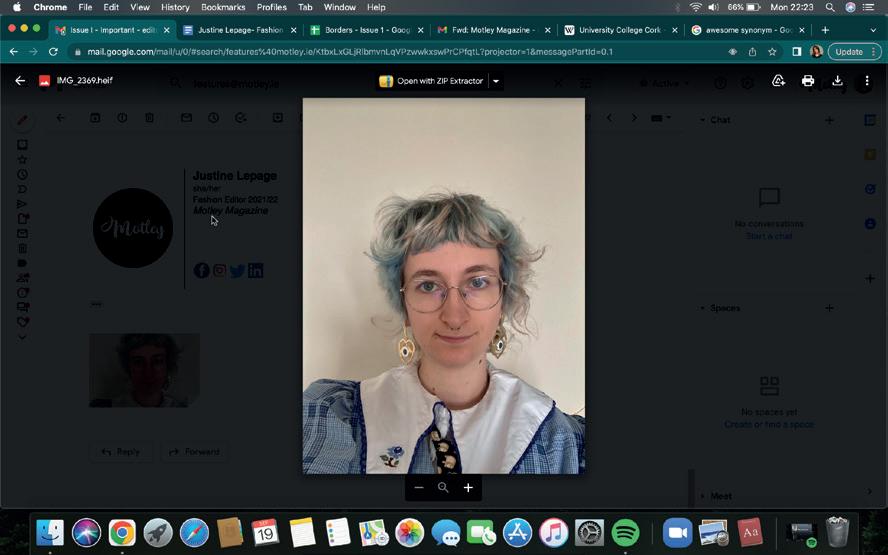
Sarah is a second year English and Politics student. Shortlisted for a features award at the 2022 SMEDIAs in Dublin, she’ll only go to the big smoke if there’s free food involved.
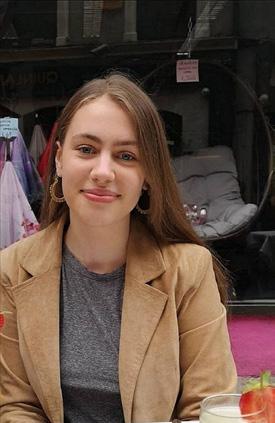




This publication is made from 100% recycled paper. Motley welcomes letters from readers, emailed to editor@motley.ie. Motley is published by Motley Magazine, The Hub, UCC, Western Road, Cork. Printed by City Print Limited, Victoria Cross, Cork. Copyright 2022 Motley Magazine. All rights reserved. Reproduction in whole or in part without written permission is strictly prohibited. All efforts have been made to ensure that details and pricing are correct at time of print. Motley magazine does not take responsibility for any errors incurred. This magazine can be recycled either in your green bin kerbside collection or at a local recycling point.
Vectors provided by Vecteezy.com and Freepik.com
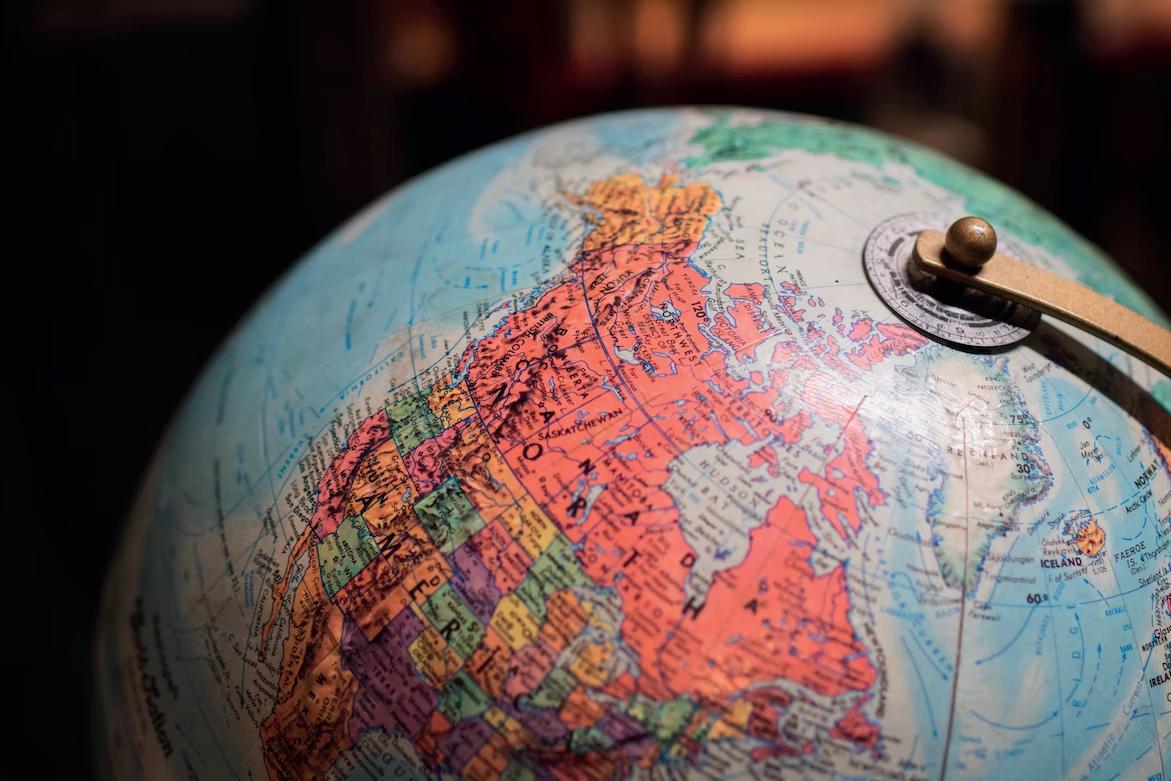
At our first Motley staff meeting of volume XVI our talented features editor Édith de Faoite sputtered across me: ‘She’s dead. She’s gone!’. This was the 8th of September, 2022. The Queen was dead. There was a collective exhale of ‘ah’ and everyone made an effort to read the room to see if a Ra joke would be considered unprofessional. I brightly chirped ‘Guys we could change the theme to Queen. Like it could be monarchy-themed, Queen the band themed or drag queen/yaas queen themed. You would have to write an article on one of these three things.’ There was a horrified silence and a vigorous head shake from our brilliant current affairs editor Ronan Keohane. With the ‘Queen’ theme a no-go, we agreed to stick to the original theme: ‘Borders’. It is for this, and many other reasons, that I am grateful for our talented team.

Sticking to the borders theme is most definitely for the best. It encompasses far more relevant issues than royalists, rock bands and Rupaul’s drag race. Since the Treaty of Westphalia in 1648, borders have always been a contentious issue. Are they delineated by geographical barriers, ethnic ones or economic ones? Why is the lottery of life so hugely impacted by whether you were born on one side of the equator or the other?
You would think that since 1648 we have made great strides in the philosophy of borders and how to keep peace. It would appear not. With the death of Queen Elizabeth II, we have examined the legacy of colonialism. With the war in Ukraine, we realise the fragility of the global supply chain. With the energy crisis, we have had to confront the reality of globalisation and the price gouging of monopolies. Borders are nebulous and ever-changing and their problems are too. This said, these problems occur in a cyclical nature. Colonialism, war in Europe and hyperinflation are all issues

we have seen before. Dare I even say, we live in extremely precedented times? This year these themes have all reemerged as prescient issues but they are not new ones. They are part of the bread and butter of international relations and the basic question of ‘how do we get along?’.

For Motley’s part, we’ve taken on the big and small. Topics such as the partition of Ireland in paint, the partition of India and Pakistan in the Marvel Cinematic Universe or the potential partition of Ukraine as a means of ending the war. We have also written about how to draw borders in our personal lives, the poetry of borders, and the power of anti-authoritarian art. As with any important theme, there’s the big stuff, with implications on the lives of billions of people- but there’s also the small stuff, and how these issues affect the bits and pieces of our personal day-to-day.
University College Cork, was originally called Queen’s College Cork. How strange it is that 177 years ago, at the height of the famine, an academic institution should be built in a gravely suffering country. The college opened with a staff of 23 professors and 181 students. The founding colleges were medicine, arts and law. Needless to say, there was no Irish language degree offered. To think that 177 years later, the same University would publish a magazine which has an article written in a language that was almost decimated by the crown talking about the crown itself.
As a new semester at UCC begins, I want to wish the best of luck to all our students, from whatever corner of the earth they come from. Regardless, I would like to think we all consider Cork our home. Whether you have never left the country, are first-generation Irish, an Erasmus Student or heaven forbid, from Kerry- UCC is enriched from all of our life experiences and inputs. And hey, be grateful that neither the magazine nor the college is Queen-themed.



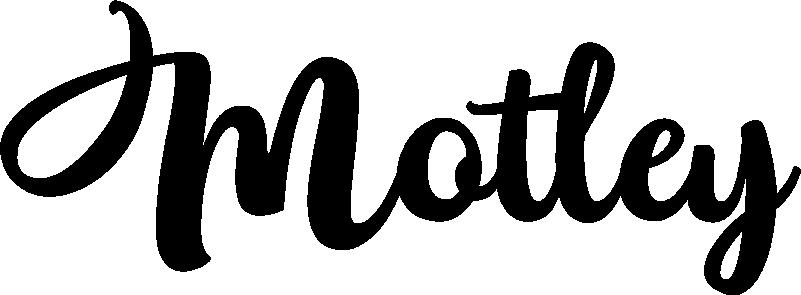

Belles of the County Down:

Paul Mescalification of O' Neill's


Why another up and coming cohort will inevitably flock to greener pastures.
As Irish people, emigration is woven into the fabric of our history. Famines, recessions and successive government failures have scattered Irish people to other nations such as England, Ame rica and Australia for centuries. Most recently, the post-2007 crash pushed thousands of Irish through the departure gates. Since then, emigration has gradually dropped each year as the country got back on its feet, however according to a census conducted last year the figures are on the rise once more, with almost 10 percent more leaving in 2022 than in 2021. There has also been a steady drop in the number of Irish nationals returning home in recent years. Thus, the cycle of departure resumes. The grass is obviously greener elsewhere.
In the immediate wake of the 2007 crash, businesses went bust and Irish people flocked to Australia and New Zealand for better job opportunities. They were employed in occupations such as nursing, teaching and construction and doing all the jobs that a functioning society requires. Some came back, some didn’t. In comparison to today’s driving forces, the millennial cohort were forced abroad for very different reasons. There are jobs in this country now. Employment has bounced back to a healthy 73.5% in the wake of the havoc wreaked by the COVID-19 pandemic and the effects

of the ensuing restrictions and lockdowns. In fact, some industries are having difficulties in finding people to work for them. The issue is now more multifaceted than employment concerns alone.
The future and potential of any society lies with its youth. Subsequently, that society has to provide enough reasons for its youth to stay and realise that potential. It is arguable that Ireland is doing the opposite and that. Ireland is squeezing its youth out. It's willing to employ them, but somehow still rendering them penniless at the end of each month once living expenses are paid. It’s unwilling however to pay its student nurses for the hours of grit and exhaustion that they give, and is then surprised when they emigrate the moment they graduate. It’s charging students the highest college fees in the EU and exorbitant rent for the most basic and subpar accommodation. It’s tearing down their nightlife, amenities and social hubs to build 5-star hotels in city centres, while some college students face dropping out of college or sleeping in a tent on campus because there are simply no places for them to live. It’s stripping them of the chance of ever
owning a home of their own. It is not substantially taking seriously their concerns about how they are meant to stand on their own two feet with so many external forces working against them. As a popular Tiktoker from Dublin who goes by the username @alicekiernan stated, “I love my home, but my home doesn’t love me back.”
Ireland is a wonderful place to live. It’s a place full of culture, heritage, beauty and charm. It has produced poets, scholars, saints, and musicians. Millions of people claim to descend from this small island. Irish people have always left for bigger and better things. Leaving is in our DNA. But a government that does little to nothing to stop the latest wave of this centuries old cycle, is a government that does not value its young people and what they have to offer. And so, the figures, as predictable as ever, indicate that a generation on the cusp of graduating is beginning to leave once again, not by choice, but as a matter of survival.
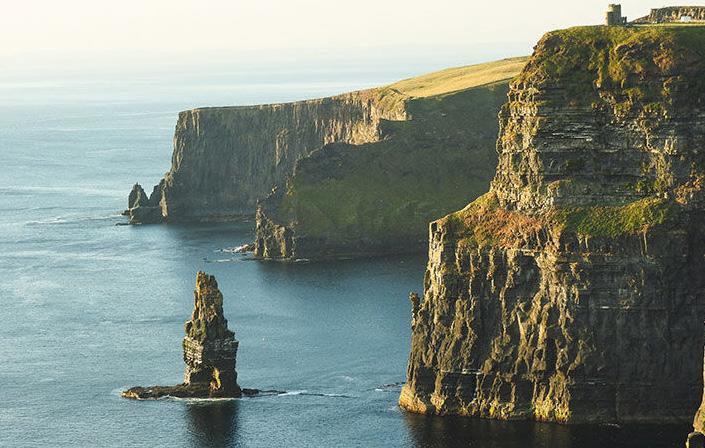









 CONTRIBUTING WRITER CONOR HOGAN DISCUSSES THE ONGOING RUSSO-UKRAINIAN WAR AND EXAMINES THE POTENTIAL DIVISION OF THE COUNTRY.
CONTRIBUTING WRITER CONOR HOGAN DISCUSSES THE ONGOING RUSSO-UKRAINIAN WAR AND EXAMINES THE POTENTIAL DIVISION OF THE COUNTRY.
Ukraine has, for the entirety of its existence, been a region of permanent contention with ever changing borders. The Russian offensive has not been the Blitzkrieg that had been expected, and the Ukrainian forces seem to be displaying the same unforeseen gallantry in their counter-offensive that has allowed them to slow the attempted annexation to a crawl thus far. But it will continue to crawl. With the planned rapid subjugation of Ukraine having failed, Russia now seeks to consolidate its position in the Eastern regions it has managed
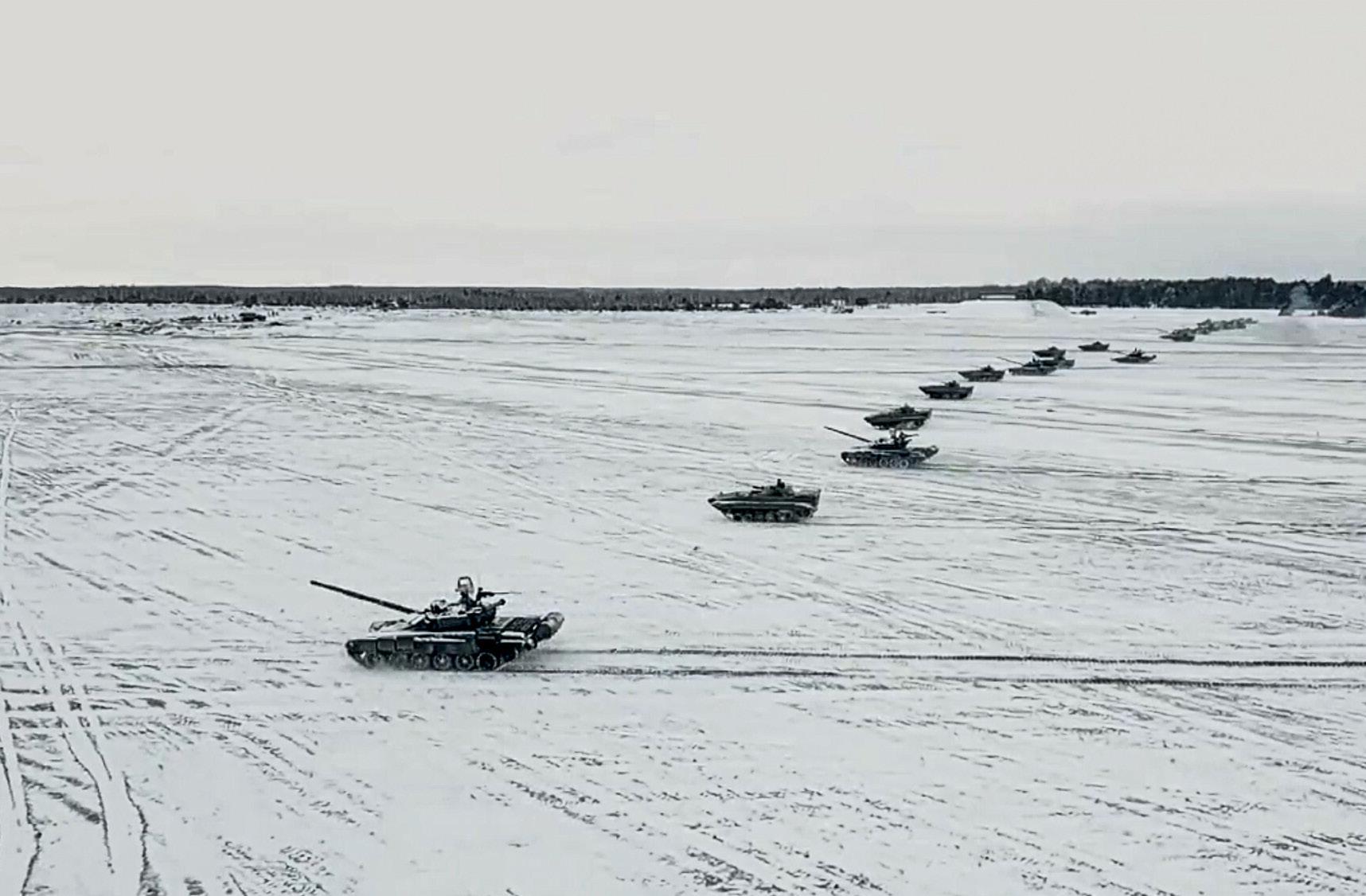
to seize; the Donetsk, Luhansk, and Kherson Oblasts, which Vladimir Putin has declared as Russian territory. As a referendum looms with the intention of annexing the region and formalizing
the land bridge from Russia to the already annexed Crimea, it is possible, if not probable, that the nation will see a change to its maps once again.

Despite the 31 years since the dissolution of the Soviet Union and the subsequent re-emergence of Ukraine as an independent state, there has remained the niggling issue surrounding Ukrainian nationality, or lack thereof as far as officials in the Kremlin (or the White house) have been concerned. Statistics regarding the Ukrainian population are notoriously



difficult to find, with the most recent census having been taken in 2001, but which indicated that no less than 17% of Ukrainian were primarily Russian speaking, the majority of whom residing in the Easternmost regions of the country; Donetsk, Luhansk and Kherson. The effect of language is evidently not underestimated by the Ukrainian government, who have promulgated the use of Kyiv (derived from the Ukrainian language name Київ ) as opposed of Kiev (derived from the Russian language name Киев ) as the title of the Ukrainian capital. Furthermore, voters in Eastern Ukraine have historically had a closer affinity to Russia than their Western countrymen, the majority of whom have seemed to hold views which are closer to the general consensus of other Eastern European nations such as Poland.

It is therefore unsurprising that like a bad penny, impossible to dispose of, the proposal of a partition has re-emerged again and again in the discourse surrounding Ukraine. Earlier this year, General Kyrylo Budanov, the head of the Main Intelligence Directorate of the Ministry of Defense of Ukraine, issued a statement outlining his fears that Russian President Vladimir Putin’s goal was to partition his country.
This is merely an example of Professor Chomsky’s rigid ideological adherence being ‘anti-war’ and Kissinger’s routine sadomasochism. But it is far from the first time a division of the land has been suggested by someone outside the Kremlin. Following the 2004 run-off election and the Orange Revolution that followed, Ukraine’s ethnolinguistic and political divide was on full display. Despite the country's newfound autonomy from its neighbour, after the 2014 ousting of elected President Viktor Yanukovych for his decision to strengthen ties to Russia rather than the European Union, partition was again seen by some as a distinct possibility in finding a solution to the country’s apparent nationality crisis.
The 20th century has shown, however, that partition is not only an ever-returning bad penny, but one that has truly lost its sheen. The initial veneer that partition once held as an equitable way of mediating or resolving conflict has long since been eroded. All partitions, with the exception of Germany, have led to further conflict, further partition or both. One needn't look further than our own country to see its effects, with Loyalists and Unionists held together by a feeble truce in Northern Ireland. Or to the ever-precarious state of affairs along the border of Iraq and Kuwait. Or to the Turkish occupation of the Northern regions of Cyprus and the ongoing hostilities as a result of the division of this tiny island between Turkish Cypriots and Greek Cypriots. Or to



the carving of a Pakistani state out of what had been Indian territory, resulting in the state of near war between the two, and the state of actual proxy war between them in Kashmir. Not to mention the Israeli-Palestine conflict. Modern geopolitical fault lines are frequently the result of gashes and lacerations to countries’ frontiers.

It's certain that Ukraine’s fate would be no different in the event of a partition or capitulation of territory to Russian control, despite any ethno-linguistic or political divisions that may have existed within the nation. Moreover, one should take into consideration the incessant bombing that the Kremlin has subjected predominantly Russophone cities and towns in Eastern Ukraine to. Kharkiv, as a case in point, the second-largest city of Ukraine located less than 50 kilometres from the Russian border, prior to the war had strong cultural and socio-economic ties to Russia. The Russian invasion has reduced the city to ruins, its residents now liberated by the Ukrainian military’s recent reclamation of the city.




What may be inevitable is the physical division of the land of Ukraine. What form that may take, be it partition, annexation or annihilation is to be seen. But the compliance of the Ukrainian people with said division is now inconceivable. What was once thought of as a situation comparable to that of Yugoslavia, where more people thought of themselves as Bosniaks, Croats, Montenegrins, Serbs and Slovenes, than Yugoslavs, thus making the preservation of the Yugoslavian state untenable, is no longer the case. The opposition of the Ukrainian government and population against relinquishment of any territory to their autocratic neighbour has proven the nation to be united. Mr. Putin may have inadvertently solved Ukraine’s crisis of nationality once and for all.

Contributing writer Ellen Mary Egan discusses the chronological events leading up to the Tigray humanitarian crisis, the current nature of it and addresses the reasons behind the general lack of awareness of it.
The director general of the World Health Organisation (WHO), Dr. Tedros Adhanom Ghebreyesus has cited the conflict in Tigray, Ethiopia as being the ‘worst humanitarian crisis in the world’. But for many people, such as myself, this was the first instant within which they had heard of Tigray and their immeasurable suffering.
For readers who may be unaware, Tigray is the northernmost region of Ethiopia, bordering Eritrea; with an estimated population of seven million Tigrayans. However, this number is deteriorating at the hands of The Ethiopian federal government who are performing ethnic cleansing on the people of Tigray supported by their Prime Minister, Abiy Ahmed. Since the beginning of the conflict, just sixteen months ago, the estimated number of deaths currently sits at 500,000 Tigrayan people.
The question remains, how did this all come about? In December 2019, The Ethiopian Prime Minister Abiy Ahmed was awarded the Nobel Peace Prize for his part in ending a decades long conflict with the bordering country Eritrea. This conflict was a result of Ethiopia absorbing the European colony of Eritrea prior to World War II. Since then, the Ethipian federal government has been treating the tigrayans as second class citizens. During this time, such militia groups as the Tigray People's Liberation Front (TPLF) came to power, resulting in further periods of conflict and peace between Ethiopia and Eritrea; Eritrea even gaining independence in 1991 until conflict arose again. The TPLF were the largest party in government and known to be corrupt with election results consistently favouring them.
After widespread protests regarding the 2015 election results, the government selected Abiy Ahmed as prime minister in 2018. He was a well-known advocate for peace and unity of Ethiopia, coming from one of Ethiopia’s historically oppressed ethnic groups. Abiy Ahmed was a beacon of hope to the people of Ethiopia, not only was he a voice for the young people, but spoke of reconciliation, peace and promoted high moral values.
The TPLF favoured Abiy Ahmed, as they believed he would maintain the government they had built and saw him as a popular choice among the young people of Ethiopia. However, Abiy Ahmed was not very forgiving of the TPLF’s power and was in direct opposition to the party, he immediately showed animosity to the militia group-turned-political party. Dismissing corrupt members from power such as the army chief of staff. He undid many of their policies concerning censorship and journalism, releasing activists and political prisoners. Overall, he opened up the country to new possibilities and a promise of a new Ethiopia, safe from tyranny and unwavering conflict.
Abiy Ahmed, slowly but surely, started rebuilding the relationship between Eritrea and Ethiopia. Given the history of conflict between Eritrea and TPLF, Eritrea expressed solidarity with the new prime minister. Abiy successfully ended the decades long war between Ethiopia and Eritrea, earning himself a Nobel Peace Prize. Abiy transformed the coalition government that was formed by TPLF and Eritrean People's Liberation Front (EPLF) into a single party government, The Prosperity Party. The TPLF were invited by Abiy to join this party, but refused, joining the opposition party in protest.
With the upcoming 2020 elections came hope for TPLF to rebuild power and establish a new relationship with the people of Ethiopia. But within the midst of the global pandemic, Abiy Ahmed postponed said election due to the virus. The TPLF denied Abiy and the Prosperity Party’s wishes and held regional protest elections for the people of Tigray. It was speculated that Abiy Ahmed postponed the elections because of the lack of popularity of the Prosperity Party among the Ethiopian people, and the little chance they had of winning the election. The restriction of federal funding to Tigray which Abiy ordered, did not minimise speculation. The TPLF retaliated by taking over a federal military base in Tigray, which ignited the beginning of conflict between Abiy's coalition with the help of Eritrean forces and the rebels in Tigray. Slowly, Abiy started to undo all the progress the country had made around journalism and political activism, restricting people's creative and political expression once again.

VAs of today, seven million tigrayan people are at risk of starvation with intense famine sweeping the region and further restrictions of agriculture, as some reports state some farmers are being restricted from planting their own crops. There have been a number of fatalities due to this, with further reports stating 1 in 3 children under five years of age are malnourished in this region. Along with this, six million of the population have been neglected of basic necessities such as internet access, medicine, freedom of travel and access to their own finances. Tigray is not new to this level of inhumane conditions as many report that the Tigrayan people were and still remain some of the poorest people in Ethiopia, even under the rule of the TPLF.
But this is not the end of their suffering, as for the last 16 months, there are countless reports of civilian massacres, ethnic cleansing and rampant sexual violence as forms of war tactics. Sexual violence as a war weapon has been
banned by The United Nations (UN) since 2013, after decades of rape and sexual assault left communities broken and traumatised. However, Abiy and his military officials have utilised it as a weapon of war, once again. Drone attacks have been ordered in kindergartens and innocent towns in Western Tigray, adding innocent children and civilians to the growing death toll. While many would agree that the conflict is two-sided, the UN have accounted most of the fatalities to the Ethiopian federal military, investigating Abiy and his government for war crimes despite their pushback. International aid has been blocked by the federal government, increasing the fatalities of famine and leaving many of the region without food.
But why is no one talking about this? The director general of WHO, Dr. Tedros Adhanom Ghebreyesus believes this to be an issue of racism in the media and Western society. The ‘colour of their skin’ being the reason for neglect as compared

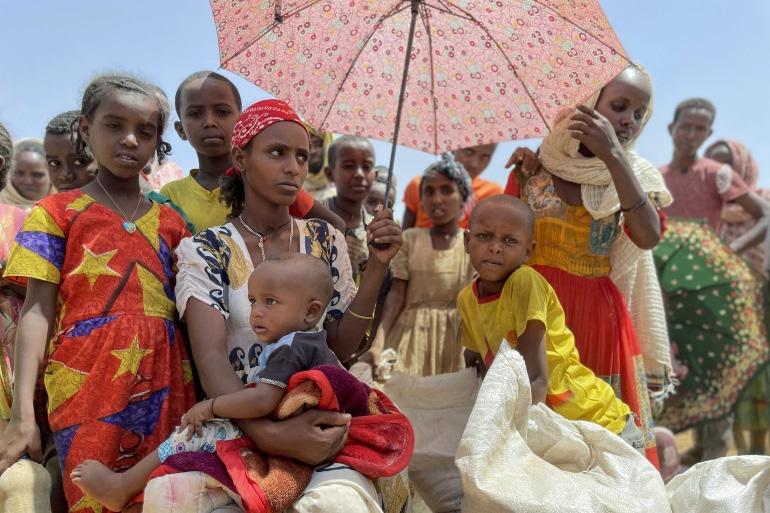
The consequences of a fundamentally unfair International order.
Globalisation is often regarded in a positive light as it has been generally accredited for unprecedented technological advancements and intellectual enlightenment throughout the world at large. This stance is usually justified with arguments that globalisation is the force which has helped facilitate the emergence of over 45,000 international NGO’s around the world, has increased communications as well as a large-scale growth in recognition of the complexity of our world and the various problems that it faces.

Although the connotation is typically positive, globalisation alongside all of its hailed advantages (worldwide increasing GDP growth, technological advancement and market extension etc.) has also got a very wide range of disadvantages which are not always brought to light in comparison to its positive attributes within popular discourse. Economic globalisation in particular has also been known to exacerbate inequalities and it is cited as the primary perpetrator of extreme environmental damage. Due to our privileged position of living in Ireland, a small island nation in North-Western Europe with a wealthy economy in the global north (as well as benefitting from membership in various international organisations such as the UN, EU, OECD etc.), we might not always be aware of the true extent of these negative aspects due to how sheltered we are from these effects. Furthermore, we are a nation which directly benefits from many aspects of the international order as well as having an established upper-hand within established economic systems and trade organisations as opposed to other places which have largely been exploited by them.
Climate change resulting from economic globalisation has become a topic of great concern in recent years and the worldwide influence of prominent and young environmental activists such as Greta Thunberg and Licypriya Kangujam, among others, have served to strengthen this concern. While there are many climate change deniers who argue that human activity is not a driving force behind the vast changes in climate and weather patterns, the rapidness within which these changes are occurring as well as the extensive grounded scientific research which counter these claims can easily serve to contradict these arguments.
We have seen in the summer of 2022 alone the unprecedented drastic effects that this has caused throughout the world, the list of catastrophes is quite long however two events which particularly stand out due to their severity include:
- Floods in Pakistan which have now submerged 1/3 of the nation underwater and has displaced approximately 33 million people.
- A particularly intense and extremely long lasting heatwave in China which has been cited as “the most intense in the history of the world” sparking an energy crisis with numerous factories being forced to shut down.
While there exists a multitude of differences between a heatwave and a flood, when investigating the numerous major causes behind the extent of their severities it is evident that the primary cause is climate change as a result of human activity. What these 2 events have in common is that these countries are both extremely resource-rich nations which have largely fallen victim of labour exploitation within global supply chains. They are widely remarked as being predominantly export-oriented economies; Pakistan’s largest primary export commodity being textiles while China’s is electrical machinery and equipment. Both industries within these export commodity supply chains describe how workers are frequently underpaid and overworked as a result of the system.
China has often been dubbed as “the world’s factory” and famed for its low labour costs as it competes for their exports to be sold in markets of the global north. Pakistan does not have as much power and influence as China however it shares the similar characteristic of having low labour costs and competing with many other nations for their exports to be sold in markets of the global north where they will reap the most profit.
What these countries also have in common is both of their primary industries are quite harmful to the environment;
these industries are responsible for high levels of air and water pollution. They are also often cited as examples of nations with high levels of worker exploitation. They are dependent on manual labour in factories which usually involves ‘sweat shop’ conditions of labour. Many look to the governments of the respective nations and the superiors within the industry as fully to blame for this, which is partially grounded however arguably narrow as it does not account for the conditions within the international order in which the nations and their industries feel are conditioned to operate in such a manner. What is further notable is that the biggest trading partner is the USA who purchases 17.2% of China's total exports and 21.1% of Pakistan’s total exports, a further significant proportion of their profits goes to other European and North American retailers (and into the high street stores) who profit significantly more from their production than even the top elites of the nations within which they were produced. The systems of exploitation which are institutionalised and continually re-enforced by these hierarchies of power (whether it be through soft-power, cultural hegemony etc.) create a situation where countries outside of the global north are continually forced to play into the system and keep producing and exporting which feeds more and more into the power system which continually marginalises them. Due to the global north consisting of agents of the hegemonic cultural influence and having the established upper hand within global financial trade agreements, the brunt of the negative impacts of climate change will not be felt as much by the global north as they would by the global south. Although it is a fair argument that negative impacts on the environment pose an overall collective threat to all of humanity in general, the disproportionate impacts it has had on the global south (who are typically more financially constrained and geographically disadvantaged) in comparison to the global north cannot be ignored.
Globalisation alongside all of its argued benefits has also created a hierarchy where nations in the global south are much more disadvantaged by the consequences of globalisation in comparison to nations in the global north as a result of hegemonic powers. While this article has provided 2 main examples due to their severity and recentness, there are many more. This is a phenomenon that is underrecognized which serves to further add to the injustices.

The recent death of Queen Elizabeth II occurred on September 8th 2022 at 18:30 BST in Balmoral Castle, Aberdeenshire, Scotland. She reigned for a total of 70 years and 214 days which is the second longest of any reigning monarch in the history of the world, second only to the reign of Louis XIV. The passing of Queen Elizabeth remains largely impactful since she held such a high position of power in the United Kingdom as well as the current British commonwealth which consists of 14 different countries, all of which are directly implemented and affected by this death.
This is a historically significant event which has sparked a wide variety of discourses both within the United Kingdom and throughout the 14 countries which constitute the British commonwealth. These discourses are all significantly polarised and include discussion surrounding the future
economic implications of the hefty expenditure of the funeral and upholding the monarchy along with contemplation of the necessity of monarchy as a continuing system of governance. Furthermore, the complex nature of what the Queen and the monarchy represent to many nations has also become a source of contestation.
Looming effects on the British economy and British colonies.
The time in which Queen Elizabeth II passed away is, within the United Kingdom, in a context of rising inflation, a looming recession and a gradual fall in the value of the national currency which has brought into question the future course of the British economy. Further, her death entails a public holiday dedicated to the Queen’s funeral which is estimated to constitute the spending of 0.2% of the
United Kingdom’s GDP for the month of September. Her death has further sparked massive online discourse regarding the necessity of the entire British monarchy itself.
What is remarkable is that both within the United Kingdom and throughout various British commonwealth countries, there has been a growing resistance against the monarchy as a system of governance. A wide variety of arguments supporting this cite finances as being a central issue, notably that it costs the British taxpayer 102 million British pounds (20212022 statistics) to maintain the monarchy. While some feel that this is a good investment since it upholds old British tradition and that expenditure is refunded through tourism and brand revenue, others believe that the system is archaic, outdated and propagates systems fostering large economic inequalities.
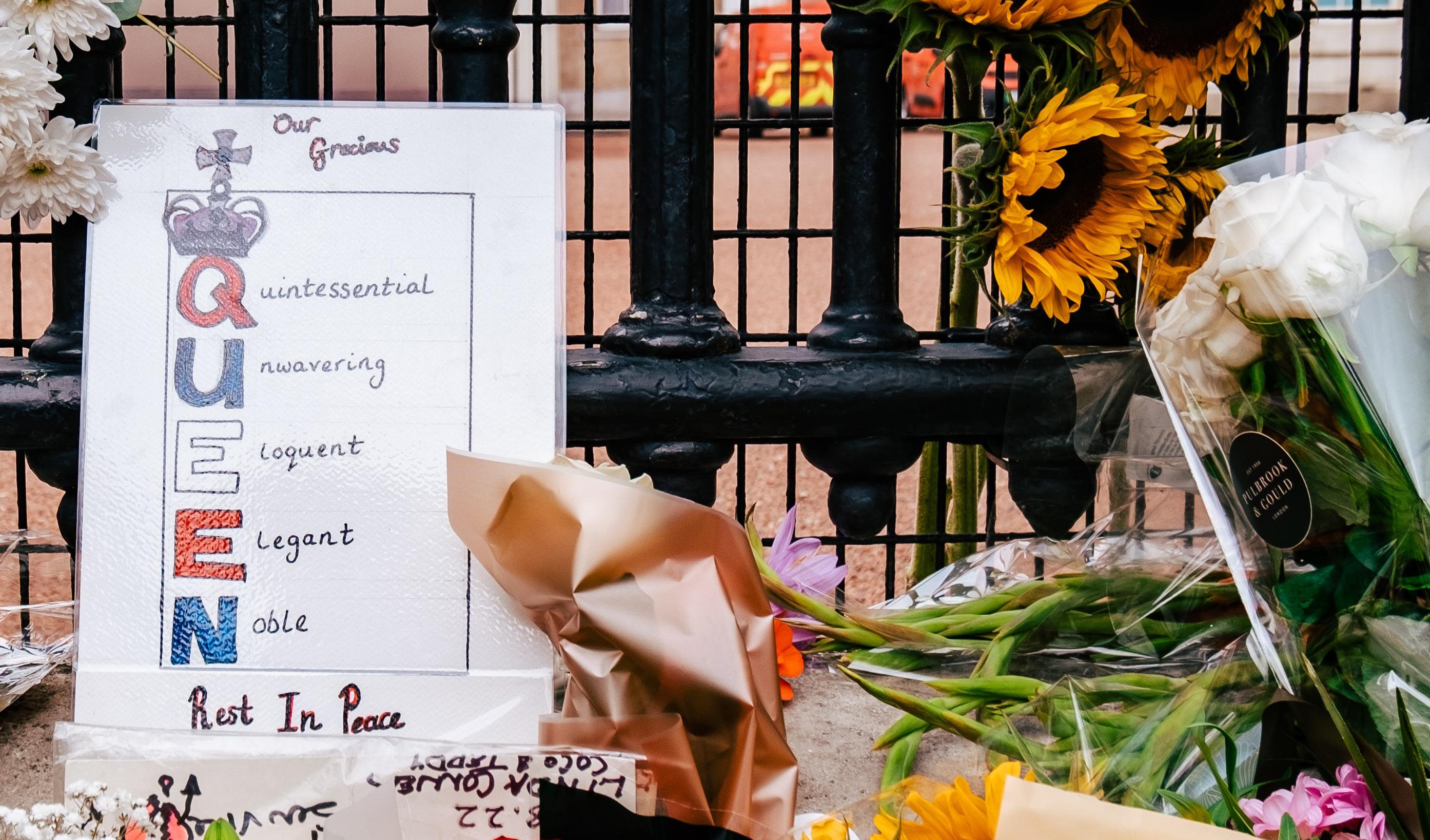 Current affairs editor Ronan Keohane discusses the recent passing of Queen Elizabeth II in light of the turbulent economic situation and remarks on the polarised nature of online discourses which muffle the complex nature of what she symbolises
Current affairs editor Ronan Keohane discusses the recent passing of Queen Elizabeth II in light of the turbulent economic situation and remarks on the polarised nature of online discourses which muffle the complex nature of what she symbolises
Britain’s average GDP is 32,555 pounds and a large number of British commonwealth countries face significant issues with poverty which many cite as being a direct result of British colonisation.
Further, many point to the death of Queen Elizabeth II as entailing a decrease in the ‘brand value’ of the British monarchy. This could greatly hinder the extent to which British taxpayer money is allocated to the monarchy that can then be reimbursed back into British society. The British monarchy as a brand reaps globally significant profit margins placing it second only to some of the most powerful brands in the world. The death of Queen Elizabeth poses a direct threat to this brand revenue potential. This has sparked further discourses regarding how the monarchy can continue to legitimise itself as a form of government and formulate such an economically important institution if this iconic branding is so threatened. Equally, many people have discussed the uncertainty surrounding what would serve to replace the monarchy if it were to be abolished since it constituted such a central part of British society for such a long period of time.

The Queen as an ambiguous and complex symbol

The aftermath of this passing has seen a large division in reaction on a global level as a result of the very mixed global perception of her and, as a result, it has sparked some very emotional responses. While some reacted with great sadness at the loss of an influential female leader who, many opine, had served her country well and represented strong female leadership, this is not the case for others. Other
people responded with anger as her death brought back memories deeply rooted in the collective traumas of their nations which was the direct result of British colonialism and everything that came with that. This is what the Queen and the royal family represented and symbolised to many people in the context of former and current British colonies. In a situation where reactions are so polarised, a more objective understanding of the complexity of Queen Elizabeth II
world leaders during this period of time despite the notable gender inequality which was significant in the 1950’s.
Similarly, although she has been widely regarded as a symbol of colonialism and colonial institutions along with everything to which that entails, she is also a symbol of decolonization to many other people. When Queen Elizabeth took the throne in 1952 the British Empire had expanded in influence and the power of it encompassed an entire quarter of the world. This ultimately changed and during her reign there 20 different countries gained independence from the British Empire. That isn’t to say that there wasn’t a significant upholding of unjust systems of power following her reign or that British colonial forces didn’t brutally suppress a number of uprisings, however it does cite the extent to which Queen Elizabeth as a symbol is much more complex than many people fully realise.
is necessary. What is remarkable about the reactions to her death is the consistent reduction of Queen Elizabeth II to essentialist symbolisms based on various components of her identity and lineage; this symbolization reduces her humanity and the complexity of her character. Although she may represent a ’strong female leadership’ to certain people, this takes away from the fact that she still grew up in extreme privilege within a family that existed on the remnants of accumulated wealth inherited from the brutal colonial expansion of the British Empire. The British Empire which at its height was the most powerful in the history of the world. This arguably put her in a position of massive privilege and power above virtually all other
The passing of the Queen has put the future of the monarchy and the British economy into a position of substantial uncertainty. The discourses which followed this significant death have also served to highlight a distinct lack of understanding regarding the complexity of the Queen as a human being beyond the essentialist identity components that she is reduced to and cannot change which has rendered a rather rigid and one-dimensional view of her, this is prevalent in both the antimonarchy and pro-monarchy sides of the debate.

Over the summer, I spent my hard-earned wages on a PlayStation 5. Do I regret it in any way?
Absolutely not. I got the opportunity to play some amazing and unforgettable games, and still have quite a backlog of more to work my way through.
However, Red Dead Redemption 2 was by far the front runner. It is a stunning game with some of the best attention to detail that you can find at present in the gaming world. Plus, along with a somewhat heart-wrenching and intense storyline which accompanies finely polished gameplay, you are left wanting for nothing. (except maybe giving Arthur Morgan a big hug.)

Now, you are probably wondering what this has to do with the concept of Borders. Well, Red Dead Redemption’s main plot is about a motley team (nice one, I know) of cowboys who, after a robbery gone wrong, have to find their footing in the modern world of 1899 America. With bounties lurking over their heads in certain states, and danger at every corner, this is not an easy task. The railroads have been constructed, states are adapting to a more ‘civilised’ approach, and cowboys are beginning to become a concept of the past. Borders are being erected in every direction that these characters glance and their options grow slimmer and slimmer by the day. Dutch Van Der Linde, their stubborn and egotistical leader, fights this change around them with guns blazing.
He promises a new plan to the fellows he calls his family, but in their current situation, sleeping in tents with ever-present threats looming, they begin to holster doubt in their fearless alpha male. After all, the world is progressing, with or without cowboys in it. A new American dream was being visualised, and according to Dutch, “There ain’t no freedom for no one in this country no more.”
While the cowboys were busy getting into bar fights and robbing trains, the game sheds perspective on what the indigenous people of North America were being faced with in this period of time. The Wapiti and their chief, Rain Falls, were a tribe of Native Americans whose hardships are established at the game’s beginning. Rain Falls was made to sign multiple treaties in an effort to stop the U.S government from relocating his tribe, who the latter then broke as they sought out the tribe’s reservation as allegedly being rich in oil. Going to extensive lengths in order to evict the natives, such as stealing their horses, vandalising a sacred site, and many more horrendous acts the US government would stop at nothing to access these resources. You as the player are offered optional choices to help out the tribe, and by letting Arthur Morgan assist them, you learn more about their story and the unforgettable treatment that is bestowed upon them. One optional mission that stuck with me, ‘Honor, Amongst Thieves’, is allowing Arthur to steal a wagon with vaccines aboard, which was initially meant to be delivered to the reservation. The tribe is growing weaker from sicknesses that could easily be prevented, but as a form of cruel punishment, the medicine was purposefully diverted and kept from those who needed it the most. By completing the mission and retrieving what was rightfully theirs, Arthur grows closer and develops a relationship with Rain Falls as those who are on the borders of society.

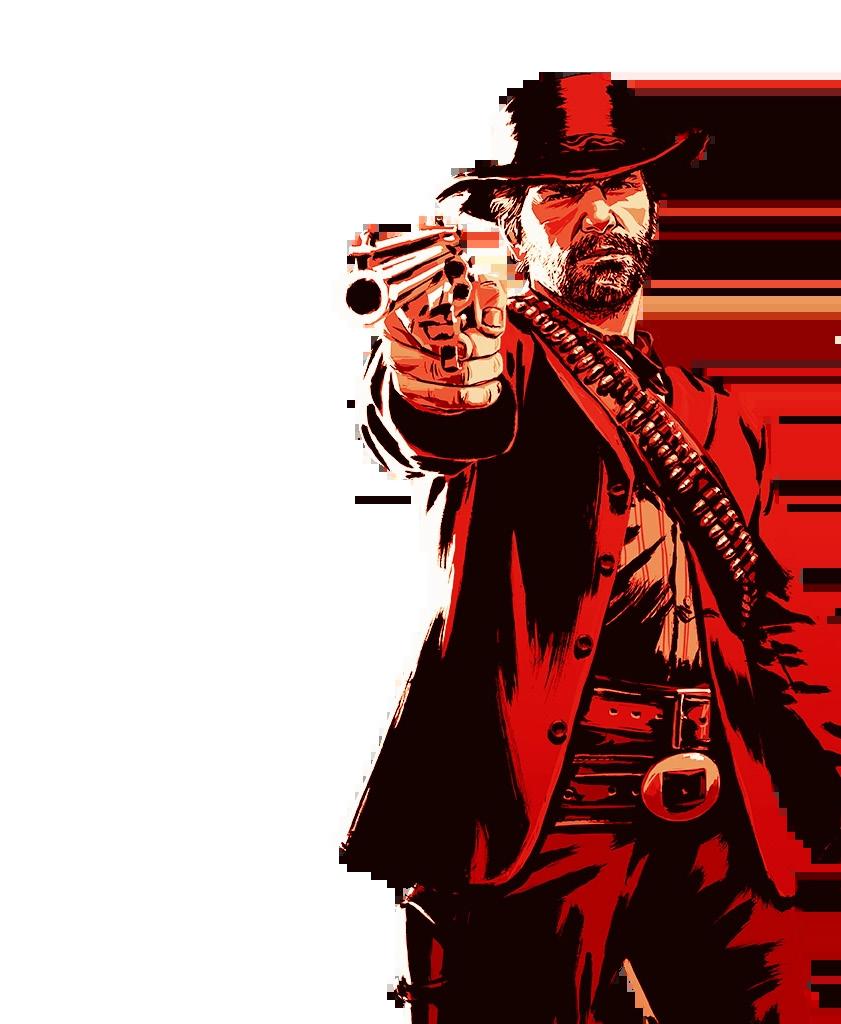
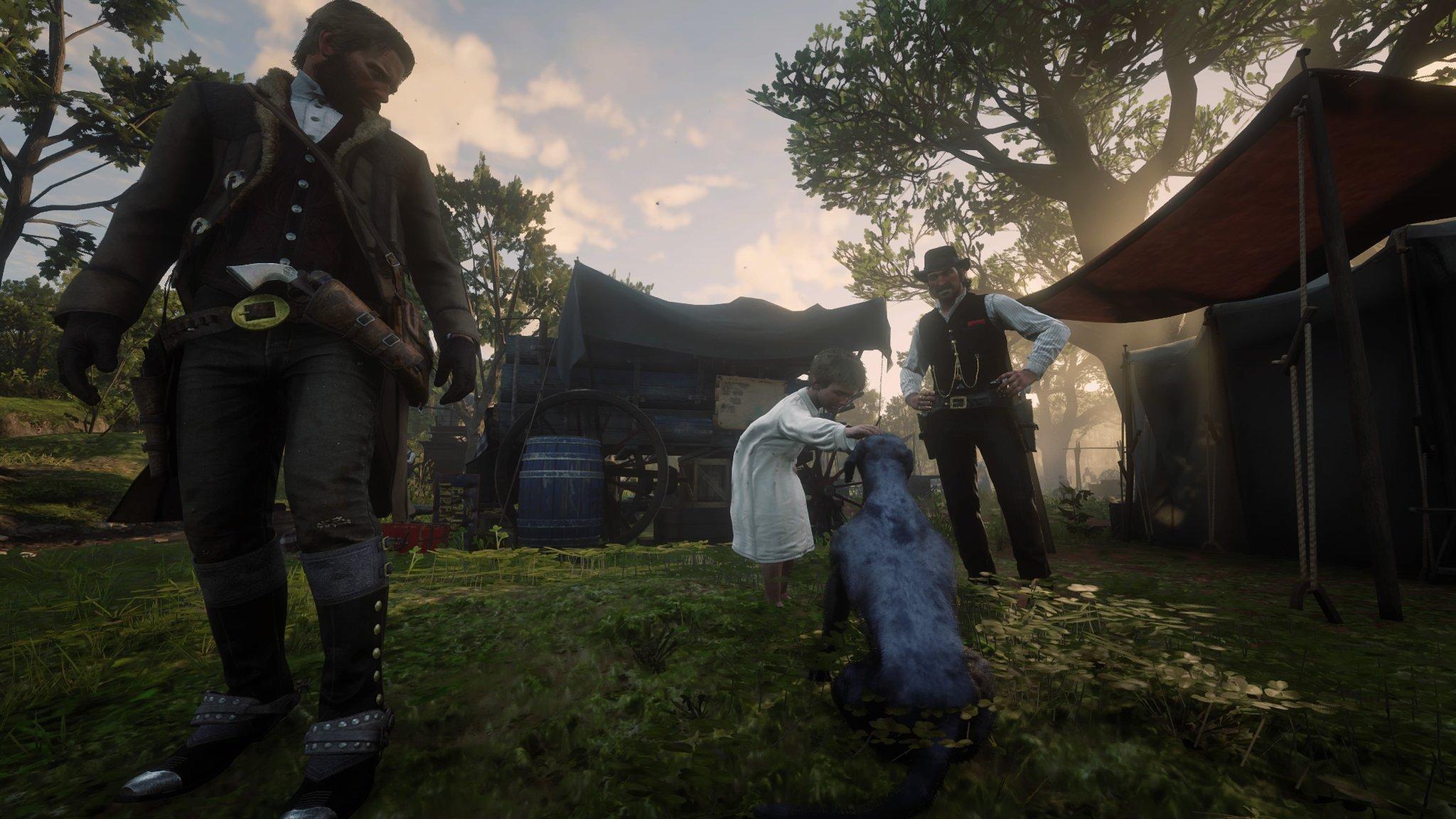
Situated on the first floor of the Crawford Art Gallery, As They Must Have Been is a major retrospective of the iconic group portrait of members of the Cork No. 2 Brigade of the Irish Republican Army, Men of the South, celebrating its reunification with its companion piece, An IRA Column, both by Seán Keating. While at first glance an engaging exhibition examining the painting, a closer look betrays a sloppy treatment of history that legitimises partition. The exhibition describes itself as an attempt to place the portrait in the extraordinary context from which it sprung, that being the Irish War of Independence, more specifically the inter-war truce period predating the signing of the Treaty and the outbreak of the Civil War. What is most interesting, however, is the “broader exploration of 1920s Ireland, and the emergence of the Irish Free State,” which takes up the majority of the exhibition.

Immediately upon entering, you are faced with a bust of Cathal Brugha, Minister for Defence during the War of Independence and who later died at the hands of pro-Treaty troops. The exhibition includes a variety of artworks; you will see portraits of Irish writers and a series of works by Keating depicting the construction of the Ardnacrusha Dam in the mid-1920s. The corner to your right is dedicated to portraits of Terence MacSwiney, republican Lord Mayor of Cork and hunger striker, and his wife, Muriel MacSwiney, who would become one of the many faces of the Irish Revolution abroad following her husband’s death.

This section is accompanied by a painting of Terence’s funeral.
There is an elephant in this room, the event looming over the exhibition and which is curiously barely mentioned: the Civil War. While claiming to explore the context of the period of the Truce, and examining the foundation of the Free State, the Civil War is only ever hinted to. This is even though most of the named republicans depicted - including Brugha and Muriel MacSwiney, - took up arms to oppose the foundation of this partitioned and partitionist state. By presenting these figures without the essential context of their ardent opposition to the Treaty, they are effectively instrumentalised as its supporters. If you left this exhibition thinking that the Civil War was a very minor event in which nobody fought against the “new Ireland”, as curator Dr. Michael Waldron tellingly calls the partitioned state, you would not be faulted for doing so. The frustrating thing is that this could have been an excellent examination of how artists were compelled by their support of the Free State to engineer an aesthetic that legitimised and whitewashed the southern state in all its antirepublican, anti-feminist and anti-worker horror.
This exhibition could have presented a far more revealing and discursive examination of the Treaty period. Instead, it intentionally mystifies the period, bringing all of the revolutionary figures to the same level and creating a false equivalence between independence and the continued partition of this island. In essence, it has wiped away the political aspect of art and the artist, and has focused exclusively on aspects which legitimise a state which would go on to assassinate figures like Brugha, ban the works of Frank O’Connor and Seán Ó Faoláin and imprison others like MacSwiney and Markievicz, all of whom are represented in the exhibition. Through the depoliticization of the republicans who opposed the imposition of a British border in Ireland, the Crawford Gallery treats it as a natural and justified division; a division which still defines political and social life on this island.
A review of As They Must Have Been (Crawford Art Gallery, 30 July - 25 September 2022) by contributor Morgan Hegarty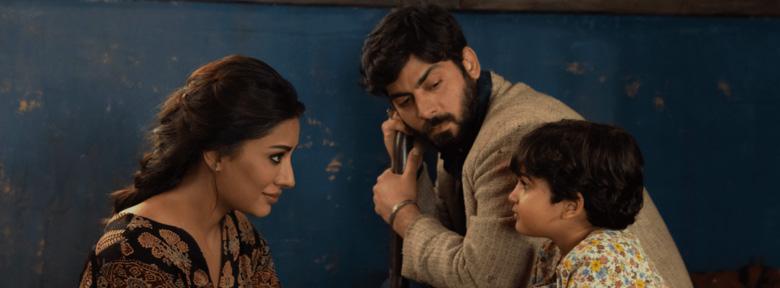
Contributor Baneen Talpur discusses the authentic representation that Ms. Marvel broadcasts, and how it differs from previous MCU works.

‘It’s not really the brown girls from Jersey City who save the world,’ says Kamala Khan as she watches the skyline with her best friend Bruno. Up until Ms. Marvel released, it was mostly true. After all, the Marvel Cinematic Universe had never featured a brown superhero before, nor had I seen girls like me on television. With recent televisual representation - ranging from Kamala Khan to Never Have I Ever’s Devi VishwakumarI’ve never felt more seen. South Asian women are telling their stories, throwing stereotypes out the window, and being proud of who they are.
Ms Marvel is proudly Pakistani, from its use of Pakistani music to the extravagant wedding dances. But seeing brown girls on television wasn’t what moved me the most. Ms. Marvel is special, not only because it discussed what it’s like to grow up as a brown girl in America, it depicted a part of history that had been forgotten by most: the Partition of 1947, which marked the end of British rule in India and established Pakistan as an independent nation.


On the surface, this sounds great; I’m obviously happy that the British no longer occupy Pakistan. But if you look a little deeper, you will find that Pakistan suffered great losses after the Partition, something Ms. Marvel doesn’t shy away from. A borderline drawn in haste led to the displacement of over ten million people racing to get to the other side. Communities that lived in harmony for centuries were now quite literally at each other’s necks. The seeds of “divide and rule” were sown.
Ms Marvel captures this pain and loss through the story of Kamala’s grandmother. Pakistan was depicted in the way that it should, with its colourful trucks and noisy bazaars. Despite not actually filming in Pakistan and instead shooting in Bangkok, director Sharmeen Obaid Chinoy made sure that Pakistan was shown authentically. There was no yellow filter that Hollywood directors use when shooting scenes in Asia and the Middle East. The music was by Pakistani artists - both local and desi - and they portrayed Karachi for what it really was: a vibrant, bustling city. I didn’t know it wasn’t shot in Pakistan until some time after.
The show employed actors from both sides of the India-Pakistan border to work together to tell a captivating story. They added emotion to a comic book plot that would be otherwise saturated by action scenes of heroes and villains fighting each other and smashing stuff. When telling the partition story, the director relied on contemporary testimonies and studied thousands of pictures to help transport the audience to the train tracks of 1947 where chaos ensued as millions fled.

Since I didn’t grow up in Pakistan, I have very little knowledge of its history. The Pakistani diaspora is the sixth largest on the planet, with millions like me feeling the same, longing for home but having no idea where home is. When the partition happened millions were separated from their loved ones, countless people died, and those who did make it to the other side continue to struggle with their identity.


Many minorities, such as the Sindhi people, lost their language and culture to a border carelessly drawn in the name of independence. Kamala’s grandmother says that even at her age she is still trying to figure out who she is: ‘My passport is Pakistani, my roots are in India, and between all of this there is a border. A border marked with blood and pain.’ She is far from alone in expressing that. That is the sentiment of millions of South Asians around the world today.
With the recent discussions surrounding the death of Queen Elizabeth II and colonisation, we must examine this part of history also. We must not forget the effect that British rule had on millions of people in South Asia. Generations later, we are still recovering from the past. In the words of Kamala’s grandmother, “Every family has a partition story. And none of them are good.”


Ronan Keohane discusses examples in which music has been used for political ideological purposes and alludes to possible contemporary examples.
Ever since the invention of the music telegraph in the 1890’s by Guglielmo Marconi, which helped facilitate the recording and broadcasting of music throughout the world at large, music has been an instrument used by governments in order to influence the populace towards a certain political doctrine. Music in general, but particularly music videos and lyrics, can be a medium of propaganda used on large swathes of populations through the mass media to encourage a certain perception that fits in alignment with a government's ideology. Throughout this article, I want to address a number of different examples of how music has been used in the past to achieve political goals.
First we will start by investigating nursery rhymes. Nursery rhymes are important to investigate since their lyrics are so widely known and they form a component of our early education during our formative years, British and American nursery rhymes in particular have been culturally transmitted throughout the anglosphere. Many argue that there are a wide variety of hidden political/ ideological encodings within nursery rhymes. John Bellenden Ker, a famous British botanist, argued that undertones within English nursery rhymes showed a particular propensity towards anti-clericalism, a policy maintaining religious hierarchy. A very famous example of a well-known nursery rhyme is Yankee Doodle, a nursery rhyme most commonly associated with the USA. The nursery rhyme actually has British origins and was a song used to poke fun at the uncivilised ‘Yankees’. The basis behind the lyrics was that the Yankee was an unsophisticated and unintelligent man who felt that sticking a feather in his cap made him fashionable. The agreed upon meaning of the song transcended when the Americans eventually began to use the song as a means of subversion and resistance against the British, this
made the song no longer one of mockery, but a song representing American patriotism.
Other examples of music as a political instrument have also been seen in some of the world’s most brutal and murderous empires, as well as the most authoritarian dictatorships known to date. Music was an instrument very elaborately employed in Nazi Germany (1933-1945), infamous worldwide for committing horrifying atrocities and the deaths of millions of innocent civilians in concentration camps. Joseph Goebbels, the Nazi Minister of Propaganda, said that music should be linked to the “volk,” - the soul of Germany. Hitler was a man who was opinionated in his taste of music and believed that music was a fundamental backbone to the establishment and growth of world civilizations, particularly during Ancient Greece; thus he employed the usage of music to establish his rule over Germany. He had very strong beliefs on what was acceptable and not acceptable; he took an extreme liking to the influential German composer Wilhelm Richard Wagner due to his glorification of Germanic legends. He also frequently attended operas as well as highly insisted that his fellow Nazis attend these operas, though the vast majority did not share this avid interest. The reason behind this was that he believed that his music and operas accurately reflected his idea of the perfect vision of Germany. As a consequence, the music of Wagner became an indoctrination tool in the Hitler youth organisation and there is speculation that his music was also broadcasted in Dachau concentration camp to “re-educate” the inmates.
The Japanese Empire (18681947) is well-known in history for its aggressive expansion and brutality. An insight into the events of the Empire reveal an extensive number of horrendous war crimes resulting in death tolls estimated to range from 3-14 million people. Similar to the employment of Wagner’s music during Nazi Germany, Gunka was employed by the Empire for similar political purposes, some of which were derived from Japanese children’s songs. The themes of these military songs heavily discuss warfare, with topics such as life on the battlefield, as well as encouraging sending sons to war. The implementation of music within this context proved effective as it was successful in recruiting many new militants for battle and the indoctrination justified many of the mass-killings and war crimes that took place allowing for their continuation.
Taking all of these historical examples into account, it is important to question the extent to which we are influenced by music and how it shapes our thinking. When discussing music and its political undertones in modernity, it’s important to contextualise the nature of the times in which we currently live. We live mainly under the influence of the “American empire,” so to speak, as an English-speaking nation with a heavy influence on media and technology. With this in mind, we can more
properly question who is behind the constructed narratives that we are being taught unconsciously in our everyday lives. American soft power, largely coordinated through the American entertainment and music industry, has proven incredibly influential on the world at large. Although they might not be controlled or coerced by the government, they are still spreading cultural assumptions in a less explicit and more underhanded way. When identifying these assumptions, and analysing the way in which they overshadow less-dominant cultural assumptions, a better understanding of dominating power structures can emerge from this. This, alongside the most influential news media outlets in the world possessing particular ideological slants while being owned by roughly fifteen billionaires and six corporations, we can critically analyse the way in which our thinking processes have been shaped as a result of the hegemonic power within the power system.
Music has been used throughout history for a wide range of different political and ideological reasons. It is important to analyse whether this is the same case today under a different ideology - liberal democracy instead of fascism - and think about the implications this could possibly have for our generations’ youth.



Entertainment editor Seán Enda Donnelly interviews Trick Mist on the release of his new album, The Hedge Maze and the Spade, a strikingly surreal mediation on loss, childhood and the future.
Neuroscience suggests memories weave together our past, present, and future. The same brain processes that we use in recollection aid us in future planning by helping us imagine different scenarios; the whatcould-have-been’s and what-might-still-be’s. Those experiencing anxiety or depression struggle with a memory impairment that not only affects recall, but also the ability to imagine different outcomes. In times of extreme doubt, that cocktail of brain chemistry can make a dire situation feel hopeless. Grief forces us to reconcile the memories of a person we knew with the reality of their loss, making us question how well we actually knew them. Such was the experience of Trick Mist, whose second full-length album The Hedge Maze and The Spade was composed in response to the death of his 96-year-old grandmother, whom he describes as a 'key to the past' in our interview. Though his grandmother’s wake served as the catalyst for the album’s construction, Trick Mist’s influences are rooted in the absurdism of Flann O’Brien’s works, chiefly The Third Policeman and An Beal Bocht ('The Poor Man'), which anchor a darkly comic and surreal sensibility in rural Ireland that is nostalgic on the surface, but possesses a satirical edge underneath; Trick Mist refers to this genre as 'investigative romanticism.' It plays out in his conception of the album as a careful balance of the romantic and critical without ever devolving into sentimentality. He tries to understand and explore their relationship through his personal, intimate viewpoint. 'When she died,' he relates, 'I thought I need to continue the exploration and figure out what lessons can I take from our experience together and how can I implement them into my future.'
If the album’s past is rooted sometime in the 1990s, a time that is much further ago than you may think, then the present is rooted in Irish society circa the COVID-19 pandemic. A time where, Trick Mist opines, 'capitalism came to a halt and people had space to think.' The pandemic was a reminder of humanity’s fragility, and with the spectre of the climate crisis heavy on the artist’s mind, he sought to ask hard questions of himself and the future that we all share.

This sentiment defines an album that looks forward as much as it looks back, crossing the hazy border between reality and imagination experienced by a mind in grief. The journey is inward, the path uncertain. The only way is through, a trek that Trick Mist likens to a train departing from 'that boring station junction' in his haunting song The Junction. A train junction is a liminal space, a place designed to be left behind, but for what? For Trick Mist, it is an on-rails journey dictated by a nameless conductor 'at the front of the train.' Just as Trick Mist explores his loss, the nameless musician braves his way to the frontmost carriage to 'see where this is going.'

But to find out where we’re going we must first look at where we’ve been. Trick Mist is no stranger to Motley Magazine. As an artist he wears many hats: songwriter, multi-instrumentalist, and producer. Trick Mist commenced in 2014, which he describes as a period of flux for bands; members dropped out to either go solo (as he did), emigrate, or both. He describes himself as primarily a singer, but one who is, ‘willing to try my hand at anything. In particular his drive towards singing and composition played into the album’s construction.

The album’s conception originated in a twenty-minute free-flow writing session following his grandmother’s wake. The lyrics were written first, before being expanded across two years into the present album. One question motivated him throughout it all: 'what does this song need musically?' With each song, Trick Mist sought to stimulate the listener with 'charged music' and 'emotional triggers' to whisk them to a landscape that – depending on the song –could be realistic or imaginary. Trick Mist describes this dichotomy as a choice between 'capturing' or 'fabrication.' It’s the difference between the sincere and the staged, human and virtual, a single take versus a meticulous, laboured edit.


'that coving on the ceiling' or how 'squeaky wheels rolled on forgotten pretty tiled floor.' The Junction opens with the warm friendliness of 'a fried egg in the cupboard for ya,' its tinge of nostalgia grounding us in the familiar, the accessible, the modern, even as we deal with the weight of bereavement. That 'threshold' between life and death, between numb certainty and harsh uncertainty, is a border that is crossed each and every day. Maybe you too have lost somebody close recently. As Trick Mist pushes at those borders in The Hedge Maze and The Spade, he creates a cathartic space for himself to exist after suffering loss. In this, the second album of an intense yet comforting artist, he invites you to join him.
The Hedge Maze and The Spade releases on 23/09/22 via Pizza Pizza Records. To celebrate its release, Trick Mist will be touring from 7th October until 23rd October in the UK and Ireland. Tickets and locations can be found via Trick Mist’s Instagram (@trickmist) and Linktree (https://linktr.ee/trickmist).`
Just as this album blurs past and future, Trick Mist blurs traditional Irish and folk with experimental electronics to create an ambient, meditative space with a tinge of the familiar amidst the strange. The Hedge Maze and The Spade continues this style, an album where 'oddity and accessibility' exist in harmony. Flag Bearer and The Junction also exist in a unity of opposites: remembrance and foresight. The former song is poetic yet visceral, in the same way that a 'particular musty smell' hitting one’s nose is. Flag Bearer details the decline of those we love and the flood of memories that it inspires, all the 'small talk/And the tea and the same utensils.' Trick Mist is not simply a lyricist, but a storyteller. His songs engage our senses and root us in a specific time and space. As the narrator reflects on their love for the person they’ve lost, they take time to notice,
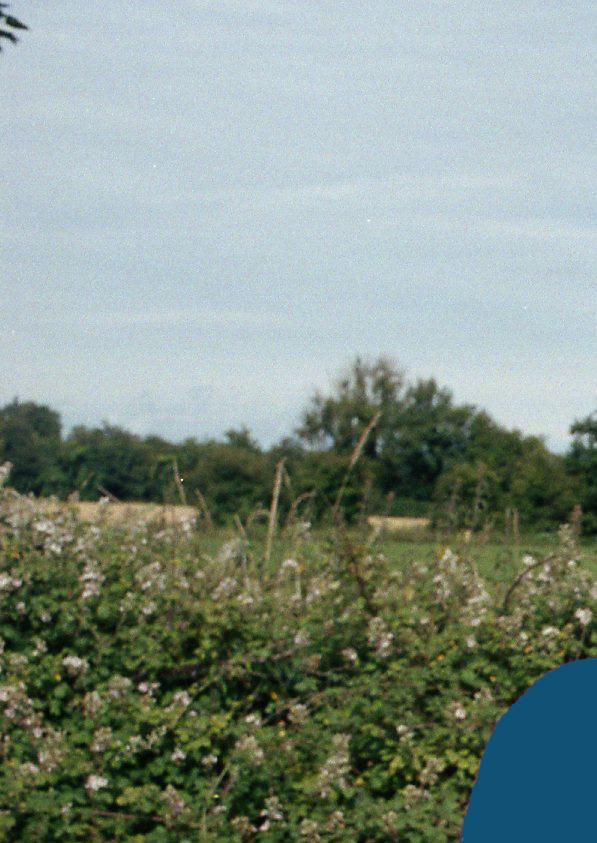
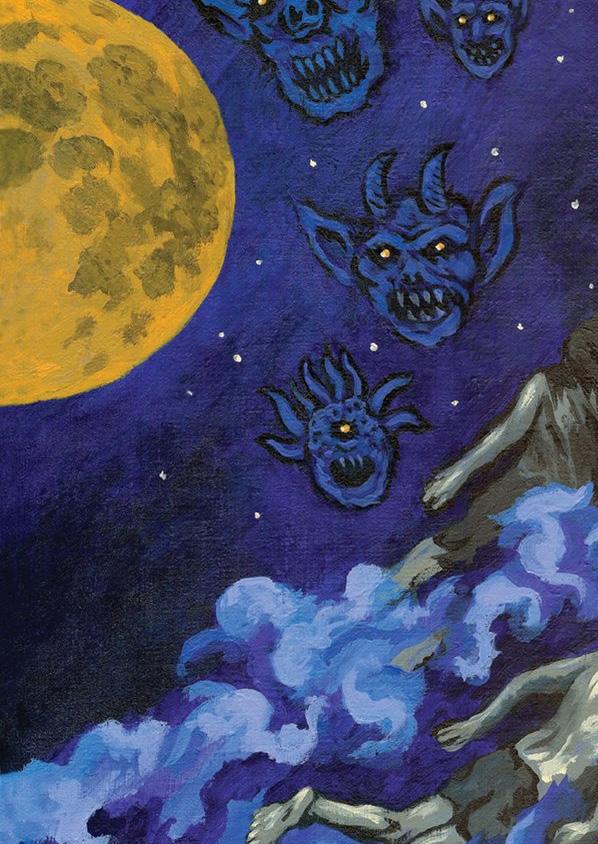
In the first line of the third verse of International Small Arms Traffic Blues, John Darnielle, frontman of The Mountain Goats, proclaims: “Our love is like the border between Greece and Albania”. You expect a certain amount of strangeness from a band who wrote an album about their Dungeons and Dragons campaign, but this might be pushing it. Sure, artists have compared their love to many things over the years. But when they do it’s more along the lines of Robert Burns’ “My love is like a red, red rose”, and not a border in Eastern Europe. And yet, if you consider The Mountain Goats’ discography, the border is a theme that reappears time and time again, rendering this line in Traffic Blues not quite so strange after all.
The Mountain Goats are an indie folk/rock band from California. Formed by Darnielle in 1991, they’re best known for their concept albums and extensive musical output. Their lyricism is the real attraction though. Darnielle’s songs cover all kinds of subject matter: discussing bog bodies in The Tollund Man; changing tack to explore the world of professional wrestling in Beat the Champ; before mapping out detailed odysseys across America in countless songs. It’s that last one I’m interested in: the geography of The Mountain Goats. From their numerous “Going to” songs (Going to Georgia, Going to Lebanon, Going to Maryland, etc.), to their tendency to include place names in their titles (Paris Enclave, Rain in Soho, Blues in Dallas), geography has been present in their music from the start. Nowhere is the concept of location better explored in their music than when the idea of borders and border crossing rears its head.
The crossing of a border is often associated with change in literary culture. Take for instance the author Cormac MacCarthy’s Border Trilogy. Here, movement between Texas and Mexico becomes an allegory for the transition from childhood to adulthood. Crossing a border can mark a milestone, a point of no return, a homecoming, a declaration of war; for The Mountain Goats it has been all these things.
“I have no place to go, so I head up to New Mexico.” Jeff Davis County Blues, the tenth track on 2002’s All Hail West Texas, documents the narrator’s drive from Toyahvale to Midland, Texas. The third verse however isn’t about Texas at all but New Mexico. Acting as the narrative’s pivotal point, the dip across the state line into New Mexico is an awakening for the singer. Unable to proceed, the driver turns around, taking “the first exit to 128” to go “back to Midland”. That phrase “back to Midland” implies a change of direction, hinted at further with the final line of the song: “I drive slowly and evenly and I dream about home”. The song is a nostalgic homecoming and that moment of hesitancy at the border is what sells it. The Texas-New Mexico border is infused with a sense of regret. “Fix my eyes in the rear view when I cross the state line”, Darnielle sings and suddenly a line on a map is a site rich with emotion.
Going to Georgia is also about returning home, albeit with a more joyous mood. Boundaries abound in this song, whether it’s in the refrain: “The world shines as I cross the Macon county line, going to Georgia”, or the unidentified “you” who’s “standing in the doorway” to welcome the singer home. The traversing of borders is a passionate achievement in Going to Georgia, an act of love.
Borders are places of transience and motion to The Mountain Goats. The cartography of their discography is an ever changing metaphor, in one moment representative of grief and in another rebirth. Whether it’s large scale partitions between countries and states or the recurring motif of doorways, thresholds carry significance in a Mountain Goats song. In Getting into Knives the protagonist pauses on the precipice before exacting his revenge: “Behold, I stand at the door and I knock, and then I knock twice.” The song ends a line later. We leave him in that doorway, at that border that delineates his life before and after retaliation.
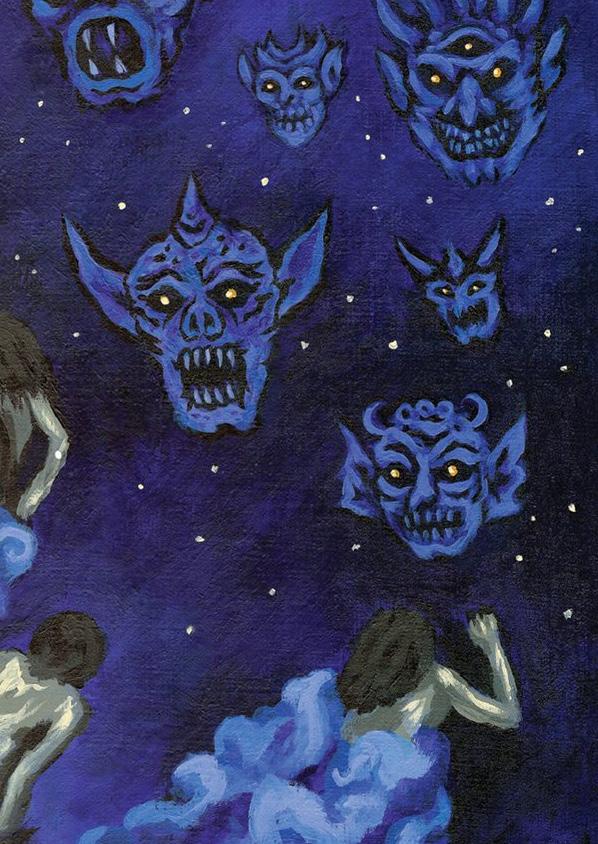
Doorways and windows go hand in hand through life, architecture, and Mountain Goats songs. Houses are a central fixture in their songs and windows act as the partition between the domestic space and the public. In Lakeside View Apartment Suite “smoky windows facing the street” separate the addicts within the apartment from the outside world. When “Michael pulls the blinds back up” to watch “for the guy who’s got the angel dust”, we get the sense that this is a common occurrence. These people spend their days waiting for their one “crystal clear connection” to life beyond these walls. Lonely and isolating– that’s
the picture of life we get from this song. They live in their own self-declared nation of cluttered rooms, their only contact with reality a lookout spot by the window and messages “thumbtacked to the door” but no one bothers “trying to read them anymore”.

Everywhere you look in a Mountain Goats song you will find someone teetering on the edge of something. In Lakeside View, that someone is an addict about to step away from his apartment full of addicts and out the door into the harsher world outside. Or, returning to International Small Arms Traffic Blues, that someone is headed towards a strained point in their relationship. Their love reminds them of the GreekAlbanian border, “trucks loaded down with weapons, crossing over every night”. Words, emotions, and tensions traverse interpersonal borders like trafficked weapons– quiet, hidden, and lethal.
Borders. They’re made up lines that can change and morph the world. They can be a metaphor for the condition of your relationship. The state lines that separate you from your family. The window that stands between you and real life. Or they can simply be a line from a Mountain Goats song.


‘Not Okay’ starring Zoey Deutsch arrived on our screens in July, and quickly gathered traction online. Naturally I was intrigued; I love a film I know no context to in the hope that I can be caught unawares, so I eagerly settled down to watch it. The film opened with a warning: ‘This film contains flashing lights, themes of trauma, and an unlikable female protagonist.’ (“Okay, so it’s every young adult movie out right now,” I thought.) This selfaware line earned a wry smile from me - women in movies are often torn apart, and the movie has done that before the trolls could, and before the characters in the movie could. Very meta. Proceed.
The film follows the uneventful life of Danni, an aspiring online journalist who blends into the background in every aspect of her life (despite the fantastic efforts of the wardrobe team who dress her in unmistakable 2020 fashion). She is apathetic, not particularly talented at any one thing, and her motives are always for attention, specifically influencer Colin’s (Dylan O’ Brien) attention. In a bid to impress him, Danni pulls out Adobe photoshop and fabricates a writer’s retreat in Paris that she supposedly attended. It all goes horrifically wrong when Paris is hit by tragic terrorist attacks, and she is perceived to have survived them.
Danni continues to lie and uses her apathy as a motivation to put herself out there, fuelled with a relentless hunger to be noticed, no matter what for. She sees the harm in what she is doing, yet she persists because she feels that living with guilt and lies is worth it to be perceived as interesting. It’s a really intriguing view into the mind of an internet troll, or an influencer who has fallen from grace and is planning a comeback podcast. It explores the viewer’s own sense of morality as they are left to decide whether Danni deserves forgiveness.
Danni develops a parasocial relationship with her online persona. Her internet success purely exists inside her phone, and she carefully curates this online persona whilst never growing as a real person outside of it. Her possessive infatuation with this version of herself only furthers her sense of meaninglessness and loneliness, and she begins to use everything and everyone around her to satiate it. It cleverly furthers the notion of how detached social media is from reality - the more Danni feeds the algorithm, the more directionless she feels.
Danni: What if I don’t feel angry? Rowan: Alright, then what do you feel? Danni: Well, I don’t know. Numb. Still numb.
Overall, I enjoyed the film. It’s littered with sarcastic jokes and niche Gen Z experiences that make me feel like it was truly written by someone who actually researched the young people they were writing about. It’s a refreshing outlook on social media where nothing and nobody is painted as bad or good, but somewhere in the middle, as we all are. ‘Not Okay’ is a warning to remain authentic online but serves as a reminder that authenticity is not a get-out-of-jail-free-card. It has caused me to metaphorically hold my phone at an arm’s length and to expect that life’s goodness waxes and wanes. Nothing can last forever. But does that still hold true in the internet age?
‘Not Okay’ is available to watch on Hulu, Disney+ and all good illegal streaming sites.



Deputy Entertainment Editor Chloe Barrett writes about the importance of maintaining boundaries in the world of books while you’re in college, along with how to escape a reading slump.

Hello, my name is Chloe, and I am an avid reader. Yes, that sounds like the opening to a support group. This is the point where you all reply solemnly “Hi, Chloe.” At least, that is what I have seen in shows. As I said, I read a lot. Currently, I am reading my ninetieth book of the year, and it may be unhealthy, but who knows? Now, for the most surprising piece of information: I am an English student (shocker!). On top of my books, I have to read quite a lot of academic novels for my modules, and I found it hard at first to juggle the two, and have heard the same from friends. However, as I enter my third year of college, I feel like I have found an appropriate balance, especially in creating a border between the two different reading styles.
The first tip that I have to offer is to get some of your college books read before the semester starts. This might sound obvious, but it is far easier said than done. I always caught myself saying “I have another two weeks until I have to finish Middlemarch, it’ll be grand!” until those weeks raced by me and I was drowning in George Eliot and one of the Brontë sisters. I would not recommend it.
A method of balancing these classics alongside my reading for enjoyment was to allow myself to pick one of my books on my ‘tobe-read' list after I had finished with an academic novel. That way, I was not only giving myself a break from the early nineteen hundreds, but I found that I was valuing my pleasurable reads more as they felt like a reward. (If you can juggle two books at once, you could also read one chapter of a college book, and then one of your own).
Sometimes, after reading a few books that would not be your forte, you can experience a bit of a reading slump. If you’re finding it difficult to start a book, even one that you have been dying to read but cannot seem to make it past the first five pages, it’s unfortunately probably a slump. I find that audiobooks excel at powering you through this rough period. After all, there will come a time when you must rest your eyes, and audiobooks are perfect. Whether you are lying on the couch cuddled in a blanket, going for an evening walk, or doing some housework, you can listen to a novel. If you have a fear of losing concentration while listening, you can follow along to your book with the narrator. To try some out, I would
recommend the app ‘Scribd’, you get a handy trial with access to all of the audiobooks that they have. ‘Audible’ is another popular one, as they probably have the biggest selection. You can always just try to look them up online, too, as many of them, especially older novels, can be found for free. Youtube has a treasure trove of audio books to listen to, with both great titles and great readers in equal measures. Cork City Library offers a service called Borrowbox, allowing you to download up to 10 audiobooks at a time every three weeks.
Another quick method of rescuing yourself from a slump is the act of rereading a favourite. Whether this is a guilty read, such as a book you loved as a child, or, in my case, the entire Twilight series, it doesn’t matter. Sometimes all you need is the comforting joy of a book that is precious to you.
I believe that keeping your hobby of reading separate from your studies is necessary. Just like the practice of creating a border between your personal and professional life for self-care, the same should be extended to your reading, especially if your reading tastes differ. For example, I am not the biggest fan of classics. Although some have been great, I wouldn’t reach for them immediately when I ponder over my next read, and that’s okay. The most important thing when reading is prioritising your happiness.
THE PEOPLE THAT ARE BENEFITING FROM CLIMATE INDUCED MIGRATION
LEAH MOYNIHAN OFFERS A CHILLING INSIGHT INTO THE CLIMATE MIGRATION CRISIS.Imagine having to watch helplessly as your family’s crops slowly start to die. Each day, you gaze out the window and they get browner until they shrivel up and disappear. There is no water; the drought has affected everyone. Your family grows thinner since you have nothing to eat, and your mouths are always dry. You and your neighbours pool together what little money you have left and gather your families. You tell them that you must all leave since you cannot have a life in your homeland any longer. You travel for hours with the children trudging weakly beside you. As you move through each town, you realise that everywhere is the same. It has not rained in months. You make it to a harbour and find a man offering safe passage for little money. It seems too good to be true, but you are desperate. You step aboard the unstable vessel and hand over the last of your savings. Your children’s wide eyes stare up at you in fear of the long journey, though you tell them that you are going to a place where you can be safe. For days you travel over the dark waters in the overcrowded boat. The sea is rough and if there was anything in your stomach you know that you would be sick. The other passengers tell tales of drought from their homelands too, but they did not have enough money to bring their families. They know that they will never see them again. After many fearful nights of expecting death, you sight land. It is lush and green, and you tell your children that this is their new home. They will go to school, eat fresh vegetables, and drink clean water. They will get good jobs and never have to worry again. However, as you move into the busy harbour, you immediately realise that you were wrong. Men with guns shout and drag you roughly off the boat. They demand your documents, but you have none. You are shunted into trucks without being
told where you are going. When the vehicle eventually comes to a halt, you step outside, and the smell hits you. It is some sort of camp with torn tents and swarms of people. You do not know how long you are going to be here or if you are going to be deported back to your drought ridden country. All you know is that you are going to hold your children tightly and never let them go.
The horrific conditions that refugees are forced to suffer through are well known by now. However, there are many different factors concerning the refugee crisis that politicians and the media seem to overlook. When migration is mentioned, we firstly think of civil conflict. However, according to climate-refugees. org, in the year 2017 60% of refugees were displaced because of ‘natural disasters’. This is expected to increase as entire regions are impacted and migrants are forced to cross international borders. Societies will be ripped apart and cultures will be lost. A report by the IEP predicts that by 2050 there will be 1.2 billion climate refugees. Climate change is a human rights issue where people have no other choice but to escape and search for better living conditions for their families. Climate stress has led them towards desperate situations when all they are trying to do is find sanctuary. As the Kenyan poet Warsan Shire pointed out, “No one puts their children in a boat unless the water is safer than the land”. Entire communities are forced to move due to catastrophic events such as sea-level rise, hurricanes, forest fires, droughts, and floods.
In Ireland, having to flee because of climate change is a distant worry as this mass movement currently takes place in low-income countries. Canada, Australia, the UK, and the US bear the most responsibility for this tragedy. Somalia is accountable for only 0.00027% of

of total emissions, yet more than one million Somalis had to migrate in 2017 due to climate change. Individuals face immense suffering and brutality when attempting to cross borders when they have done nothing to deserve such a punishment. The governments of developed nations with the highest emissions do not seem worried about their creation of environmental refugees, they just want to keep the problem out. “Refugees are mothers, fathers, sisters, brothers, children, with the same hopes and ambitions as us- except that a twist of fate has bound their lives to a global refugee crisis on an unprecedented scale”- Khaled Hosseini. NGOs have done their best to highlight this human rights emergency. Sadly, the awareness can be negative as it has led governments to adopt anti-migration policies. Politicians see climate change as an excuse to fortify their borders and increase security. Migrants suffer from militarised borders and strict policies. They get criminalised as asylum seekers and are viewed as a security threat instead of sufferers of injustice. They are seen as a menace to be managed by policy makers and this leads to horrific human cost. People become trapped in worsening conditions, and low-income countries’ adaptive capacities become restricted. Evidence of this inequality can be seen in the conditions of the refugee camps, the death toll of refugees and the pushback in countries such as the US.
Instead of addressing this as a climate issue, governments are making the problem worse by ignoring the people begging at their borders for help. Climate finance is not taken seriously with the wealthiest countries failing in their pledges of an inadequate $100 million a year. An Oxfam statement indicates that the true total of climate finance may be half of what is reported. Instead, an excessive amount of money is being pumped into the border security industry which is benefiting from climate
change. According to ResearchAndMarkets. com, increased spending towards border forces is due to ‘climate warming-related natural disasters growth’. Militarised borders are being prioritised over climate finance which only worsens the human rights of migrants. The Transnational Institute reports that Canada invests 15 times more money into border security than climate finance. We have all heard of the masses of sinking boats in the Mediterranean. This is happening every day and countries are ignoring the tragedies. It is alleged that many people supported Brexit because they wanted to keep refugees out of the UK. An analysis by FGV found that the regions with the highest number of immigrants in the UK voted to ‘Leave’. Borders make us feel safe, like we can block out climate change. Yet of course, climate change does not see borders. It will affect everyone in the end.
Governments need to move to increase climate finance, and they must treat this as an urgent human rights issue. Instead of investing billions in the border security industry, countries need to put significantly more money towards climate finance. This will aid poorer countries in adapting to a changing world and it will help mitigate climate change impacts. The funds could challenge the sources of displacement. If migration is sufficiently supported as a responsive and planned procedure, it could be a great means of climate adaptation. Instead of being criminalised, migrants could be supported with infrastructure and resources to build new lives in a different place. We have the responsibility to urge governments to make this happen. As Albert Einstein said, “The world will not be destroyed by those who do evil, but by those who watch them without doing anything”. Good public policy, global cooperation, and increased climate finance can help save human lives that played no part in creating this crisis.

“NO ONE PUTS THEIR CHILDREN IN A BOAT UNLESS THE WATER IS SAFER THAN THE LAND”
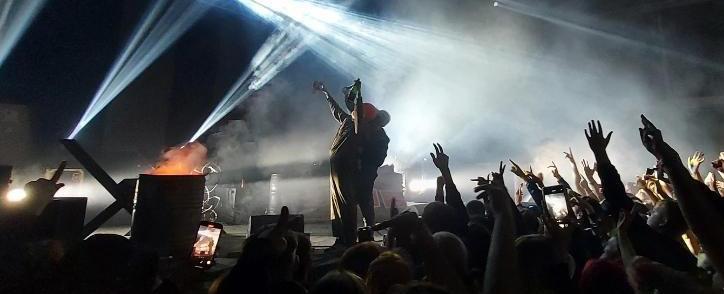
Mayor is focused on Ramallah, a city in the West Bank under Palestinian administration and surrounded on all sides by illegal Israeli settlements. The plight of the Palestinain people is much likened to The Troubles in Northern Ireland, in which Catholics were systematically persecuted. Woven into my discussion with David was the role of art in rebelling against such political oppression. While we speak I mentally draw parallels with the Irish language rap group Kneecap who also pose similar political questions through their lyrics and performances. As mayor, Musa encounters issues such as the blocking of entrances to Ramallah by the Israeli presence, the lack of permission for a waste management plan for the city and the inability to expand Ramallah’s cemetery without Israeli permission amongst a multitude of problems. Freedom of movement is also a major issue, with Ramallah’s residents unable to travel to Jerusalem, ten minutes from the city. The documentary is successful in its relatability and attempt to ‘reach out to people who have never been reached out to on this issue’. It centres around the universal ideas of ‘living in a city, having dignity and caring about the social space of your public areas’. The piece is not an average Western documentary about suffering victims in the global south. We are exposed to humdrum city council meetings and the building of a fountain by Musa which both represent the steadfast resistance to the occupation.
The documentary is emotionally complex with dark humour. Hope and joy are deliberately interwoven by David to underline a reflection true to life. The humour shown in the piece makes it a smoother watch and the more serious scenes are all the more jarring and effective in confronting Iraeli oppression. David tells me some reviewers have compared it to the American comedy series Veep, or the British comedy series The Thick of It as carrying a similar style of humour. One scene sees a young boy ask Musa what
political group he is a member of. Musa responds that he is a member of the Popular Front for the Liberation of Palestine. The child cries that they are outdated and Musa responds with ‘that's right there's no one left to liberate us’. Another scene sees the city council discussing the opening of the US embassy in Jerusalem, with ‘ou r respectable brother Trump and Ivanka’ referenced until a councillor tells the meeting to leave Ivanka out of it. David shares that when he ‘pitched the film as a dark comedy to funders they thought I was nuts’. However, featuring this humour is a way to show the people of Ramallah with their dignity. This is the part of the documentary I see as the true protest against the limits of Palestinian freedom. Rather than framing the city in a sad light it is instead clear that an injustice is happening to the community. Humour shines through as a result of ‘dignified people in an undignified situation’.
There is also unexpected comedy when a German delegation meets with Musa and his colleagues in an attempt to spur negotiations with Israel. Of course, this proposition brings intensity to the scene, so it is easily missed, but members of the German delegation are given subtitles while everyone in the scene speaks in English. David explains this was a deliberate act to underline the German delegation as visitors in this film about indigenous people. It is a small rebellious act in the editing that makes all the difference. David calls this a subtle ‘moment of decolonisation’, one of many in the piece which is soft enough to not distract us from the story of the people and local governance in Ramallah but still moves us to question the over all geopolitics.
David also shares that you can only fight authority with culture. Art in all its forms will connect with people as you ‘can’t move anyone intellectually unless they’re moved emotionally’. In this way the film can reach people who weren’t aware of such injustice
in Palestine. Even Israelis who may not have seen or heard the true implications of something such as the dumping of waste on Palestinian lands.
Listening to David I reflected on the attitude of Kneecap when questioned on their lyrics and actions. They recently unveiled a mural of a PSNI van on fire with the quote ‘níl fáilte roimh an RUC’ meaning RUC (Royal Ulster Constabulary, the police force with militant ties that preceded the PSNI) not welcome here. It caused a media storm, attracting coverage in the Guardian, the Irish Times, the Belfast Telegraph and setting Twitter alight. In an interview with The Guardian,
Kneecap’s reaction is firstly delight at the publicity they have received and secondly a statement from Móglaí Bap, a member of the band, encouraging research into Alliance’s stance on the British Army in the North. He states ‘we don’t want to be fighting or advocating violence, we want people to be thinking’. This is, of course, in response to the condemnation of Naomi Long, Minister of Justice and leader of Northern Ireland’s political party Alliance, of the mural stating that it is inciting ‘sectarian hatred’. Kneecap are asking broader social questions of people. Like David’s footage of the people of Ramallah, Kneecap’s appeal to Irish identity reframes the international view of Northern Irish people. Their art makes us more engaged and curious of the politics of the North and prouder of the Irish language even if we only have the odd cúpla focal.

Even Kneecap themselves engage in the link between the North and Palestine, noting their years of fundraising through gigs for the building and development of Aclaí gym in the Lajee centre in the Aida Refugee Camp in Palestine. In June 2022 Kneecap played as part of an event called ‘Hip Hop for Palestine’ in Workmans in Dublin. The group holds a steady resistance to the subjugation of people at home and abroad, through their art and actions. Their lyrics are a celebration of the lives of nationalists in Northern Ireland as well as a defence. This in turn feeds their solidarity with the Palestinian people. During our interview David explained that Western takes on the political oppression of people of different cultures can fail when injustice is presented as faraway with no connection to our lives. This is exactly what David and Kneecap have overcome in connecting us to people and places in a new way. Their art forces us to rethink and empathise with political struggles that are usually presented as sad soundbites. This is the only way to change opinion and gather support.

Jessica Anne Rose provides a thoughtful meditation on the scope of borders not in the political sense but in the intimate one; how we relate to one another.
“Borders”. A word teeming with beginnings of ideas and yet - I’ve got nothing. Two days before the deadline as the sun goes down, I ask my dog for advice. Her sad eyes dart across my face and back. I imagine her voice, today a deep and warm one. ‘Write from the heart’. That seems to be the general consensus when I ask for writing advice, yet I don’t think anyone would be interested in what my heart is saying. How does my writing fit into this world, and more specifically, this theme? “Borders”. Then, all at once inspiration hits me, so I turn to Dots, (my wise dog) tell her she is once again a bloody genius, and start to type.
When I imagine myself and the world, I am always hovering just outside of it, around where the ozone layer used to thrive. A little satellite, collecting intel from below and never fully interacting with the people I observe. In every way that exists, I have always been an outsider. My ‘border’ is humanity, because nothing about me or my experiences as a human have been typical. I often feel like my hands are that of a ghost’s, reaching out for people but never connecting. Merely passing through, searching for steady ground. I do not fully fit in anywhere. Yet I can abide this.
I read once that in Japanese culture, it is believed everyone has three faces. ‘The first face: you show to the world. The second face: you show to your close friends, and your family. The third face: you never show anyone. It is the truest reflection of who you are. I believe in it. I feel myself switch between my faces daily. Yet it doesn’t make me feel fake, or confused about who I am. In Greek mythology, the goddess Persephone has two alter egos. One turns the world to winter and makes the earth die as she resides in hell, and one brings the world to life and makes the sun
rise. Both so different but both intrinsically her. If the Greek and Japanese both understand the notion that you can be many things at once, why can’t the western world? Why can’t I?
I spent the summer working in a hospital kitchen where I saw examples of invisible borders between people everyday. Between myself and colleagues, nurses and doctors, between patients. For a while I wore a fourth face and created a customer service voice, and forgot to retire both once my contract ended. College restarting has given me the opportunity to explore myself again, and the borders behind which I peer from. It is never too late to reinvent yourself. Changing and going through phases are completely natural. The earth does it with her seasons, the moon with her lunar calendar. All of the previous versions of yourself live within you, and the best and worst of them contribute to who you are now. Certain elements of ourselves we cannot change, but others we can. What ‘borders’ have I unnecessarily created for myself? And which one will I break down first?
This college year, I am breaking the border that I hide my emotions behind. I want to tell
my friends I love them out loud. I want to stand by my different opinions, unafraid of rejection. I want to learn to love my very emotional self who cries at dog Tiktoks. Because there is no reason to minimise or lessen myself, especially in an environment like college where there are thousands of different personalities. Why struggle to make myself palatable when I have no true desire to be digestible? For this academic year, I will strive to live without my internal borders. To exist as fully as I can. What ‘borders’ do you live with? What ‘borders’ will you take down? I would love to hear.
“Ava, bhí orainn a bheith seampúaithe, Roimh an vírus ní raibh baint ag éinne le gruaig Albanach riamh, Mar sin bhíomar ag mothú amaideach, úrghlanta inár shuí, Francach leath-bháite ag stánadh ón scáthán, Uisce ag titim síos orainn, ár gcollair ‘s ár maisc lán, Eispéireas uafásach náireach a bhí ann, Clúdaithe inár gruaige tais gearatha amach, donn” … Ní raibh seampú déanta orthu roimh an seampú paindéimeach seo, Ach anois ‘s muid lán farraige óna chéile Ba mhaith liom féin gruaig a sheampúadh de mo fhear Albanach


RÍ SÉARLAS III: BÁS NA MONARCACHTA SA TUAISCEART?
Is minic a fheicim rudaí a chuireann ionadh orm, ach nuair a chonaic mé físeán ar Twitter le Michelle O’ Neill agus an nuacheaptha Rí Séarlas III, thóg sé soicind dom an íomha a chreidiúnt. An rud ni b’aistí ná an slí cheanúil a chaith an rí leis an mbean atá i gceannas ar an bpáirtí poblachtach sa Tuaisceart. Bhí an chuid cainte i rith na seachtaine mar gheall ar an gcruinniú seo, ina measc daoine ag cáineadh an bhéim a bhí á chur air. Dar le hArlene Foster, bhí an iomarca cainte á déanamh toisc go raibh an chuid cruinnithe idir baill na monarcachta agus lucht Sinn Féin thar na blianta. An cheist atá ar intinn na ndaoine, go háirithe anseo in Éirinn, ná: cad atá i ndán do lucht an Tuaiscirt anois?
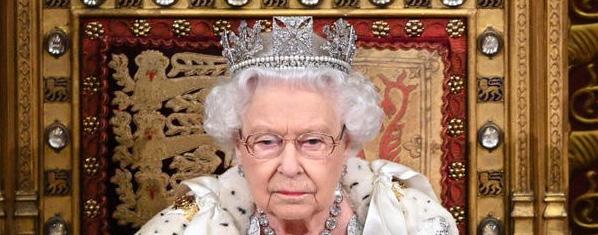
Tá sé ráite arís is arís eile gur thaitin an Bhanríon Eibhlís II le daoine toisc gur thug sí cobhsaíocht don Ríocht Aontaithe agus mhair sí agus threoirigh sí trí theacht is imeacht cúig Phríomh Aire dhéag agus na céadta imeachtaí suntasacha. S’é a deireann na daoine atá i bhfábhar na monarcachta ná go dtugann sé seasmhacht do lucht na tíre i rith tréimhse corrach, ach i gcaitheamh seachtaine, ceapadh Príomh Aire nua agus monarc nua sa Ríocht Aontaithe. Níl mórán seasmhachta i gceist le sin, dar liom.

Gan amhras, bhí freagraí éagsúla ag daoine nuair a fuair an Bhanríon bás, agus bhí an raon iomlán freagraí le feiceáil ar oileán na hÉireann. Chun sampla amháin a úsáid, bhí lucht leanúna an foireann sacair Shamrock Rovers ag canadh amhráin ag ceiliúradh bás na Banríona ag cluiche sacair idir iad féin agus an foireann sacair ón tSualainn Djurgardens. Ar an lámh eile, feictear graifítí ar bhalla i mBaile Átha Cliath ag caoineadh bás na Banríona agus ag léiriú tacaíochta do dhílseoirí an rí. Tháinig na céadta daoine amach chun a gcomhbhrón a thaispeánt nuair a bhí an Rí sa Tuaisceart ar a chuairt oifigiúil, ach ansin bhí dream
i dteach tabhairne i nDoire ag ceiliúradh nuair a fograíodh bás na Banríona.
Anois, tá athrú láimhe ó thaobh na monarcachta de. Seachas an seanbhean bheag a bhí i réim thall le cuimhne na gcat, anois tá fear i bhfad níos conspóidí. Ón scannal a bhain lena chaidreamh pearsanta le Diana agus le Camilla (ná lig dúinn dearmad a dhéanamh ar an ráiteas faoin súitín) go dtí na ráflaí go raibh sé ag déanamh iarrachta a thionchar a imirt ar chúrsaí polataíochta, is liosta le háireamh é na rudaí diúltacha a bhaineann leis i ndearcadh an phobail. Fiú le déanaí, bhí caint ar a iompar cantalach nuair a tháinig racht feirge air agus é ag síniú leabhair ag Caisleán Hillsborough i mBéal Feirste. Ní nach ionadh nach bhfuil an cion céanna ag an bpobal do is a bhíodh dá mháthair, bean a bhíodh séimh i gcónaí, is cosúil.
Ní féidir dearmad a dhéanamh freisin ar an mbaint a bhíodh ag an Rí nua le cúrsaí míleata. S’é Rí Séarlas an Coirnéal Ceannais ar an Reisimint Pharaisiút, mar aon le freagrachtaí míleata eile. Ní dhéanfaidh muintir an Tuaiscirt dearmad go deo ar an réabadh a rinne saighdiúrí ón reisimint seo ar cheantar an Tuaiscirt. Is iad baill na reisiminte seo a raibh freagrach as an slacht i mBaile Uí Mhurchú agus as Domhnach na Fola, eachtraí foréigneacha inár maraíodh sibhialtaigh neamhurchóideacha. Is deacair dearmad a dhéanamh ar an mbaint a bhíodh ag Séarlas ar na laethanta dorcha sin. Seans go mbeadh an chuid daoine sa Tuaisceart míshásta le rí i gceannas agus ról tabhachtach aige le grúpa freagrach as básanna, foiréigean agus sceimhle sa cheantar.
S’e an rud ba scanrúla faoi bhás na banríona ná an costas a bheidh ar an socraid agus ar na himeachtaí ar fad a bhaineann leis. Deirter go mbeidh costas tuairim is £8 milliún ar an tórramh, agus níl ann ansin ach
Édith de Faoite, an t-Eagarthóir Tuairimíochta, faoin ionadh, brón agus céiliúradh a bhain le bás Eibhlís II.
garmheastacháin mar níl an fíorchostas fógraithe ag an bPálás fós. Tá fógraithe, áfach, go mbeidh cáiníocóirí ag iompar ualach na chostais. Beidh costais shlándála san áireamh agus beidh siad ard, toisc go mbeidh beagnach gach ceannaire domhanda i láthair ag an imeacht seo. Caithfear pá na hoibrithe atá ag obair agus a bheidh ag obair ar an lá a smaoineamh ar freisin. Ag socraid na Ríonmháthar i 2002, bhí timpeall 12,000 póilín agus 1,000 oibrithe eile ag obair agus, gan dabht, beidh níos mó don socraid seo. Bhí costas £5.4 milliún ar an socraid sin, chun smaoineamh a thabhairt duit ar an gcostas a bheidh i gceist leis an gceann seo. Tá sé seo go léir ag tárlú taobh le an ngéarchéim chostas maireachtála is measa atá feicte againn le fada an lá.

Dar leis an Rianaire Income atá ag Asda, níl ach níos lú ná céad punt steirling fágtha in aghaidh na míosa ag clann sa Tuaisceart ar an meán. Tá daoine ann i mbarr a gcéille ag iarraidh na billí a íoc, gan cabhair ón rialtas, ach tá an rialtas céanna toilteanach na milliún punt a úsáid chun íoc as socraid daoine a bhí an shabhair ar
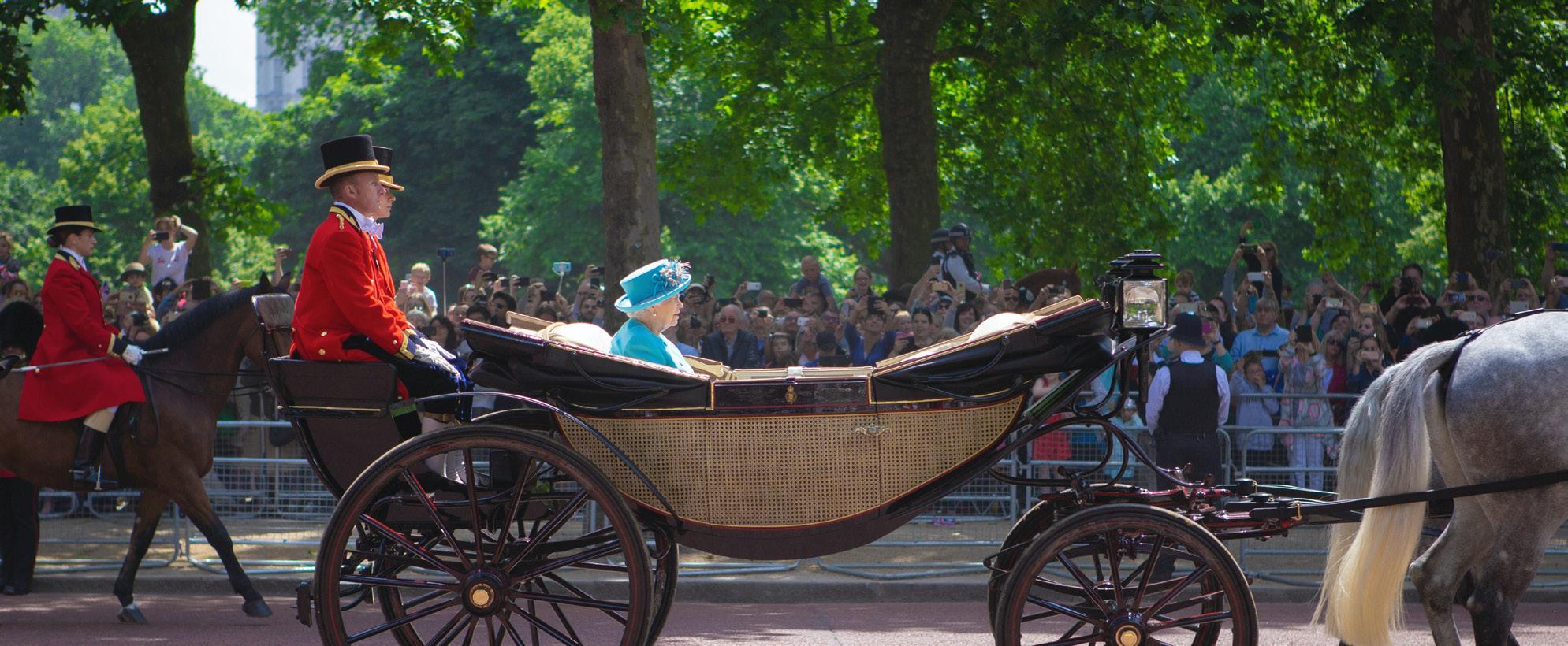

an gcéad dul síos.
Nílim chun an tabhacht a bhain leis an mBanríon a shéanadh. Bhí an chuid daoine ar fud an domhain ceanúil uirthi. Thosaigh sí amach mar bhanríon nuair a bhí an Ríocht Aontaithe i mbarr a réime, le himpireacht a chlúdaigh cuid mhór don domhain. Bhíodh sí comhartha seasmhachta i rith tréimhse míshocair agus seasann sí do láidreacht na Ríocht Aontaithe do an chuid daoine. Ach anois, is deis é do gach éinne, go háirithe iad sa Tuaisceart athscrúdú a dhéanamh ar an tabhacht a bhaineann leis an monarcacht. An mbeidh lucht an Tuaiscirt ag iarraigh fáil ré leis na hinstitiúide anois, le fear míleata a bhí freagrach as fualaingt, bás agus brón, nó an mbeidh siad sásta aghaidh a thabhairt ar an todhchaí? Is maith an scéalaí an aimsir. B’fhéidir go ceart aithris a dhéanamh ar Michelle O’ Neill agus an stair roinnte atá idir Éire agus a Ríocht Aontaithe a adhmháil, ach fós troid le haghaidh saoirse ó hiarsma na himpireachta.


Border is a term that is as controversial as it is ambiguous. From our own historical issues with the term on the isle of Éire to hundreds of disputes of nations, lands and cultures across the world, it’s not a word to take lightly in terms of political importance.
One place that embodies this importance and controversy is the United States of America. A land divided geographically, politically and culturally to say the least. If you ever need an example of borders that are practically carved by a knife you need not look further than America. The country spans six time zones, fifty states, five oceanic coastlines and 3243 domestic counties. While these divides are physical and functional, from my time in the U.S I found the more substantial divides lie internally in society.
These internal borders are the ones that matter in the makeup of the self-proclaimed “land of the free and home of the brave”. They determine much of the nation's socio-economic and cultural values while also deciding who politically influences the country. These values change radically and can move just as much left or right as the country’s longitude. In my opinion, most of the cities in the states feel like completely separate territories. State laws only subsists to federal laws which can only be overruled by the infamous Supreme Court.
The in-house boundaries and everything that comes with them was evident with the Supreme Court and it’s upending of Roe vs Wade which conferred the right to abortion. This case resulted in the pulling of “ trigger laws” in several states, which immediately banned abortion. Some other states are in an adjustment period where abortion is legal under very specific guidelines. The floodgates have truly been open with regards to in-state referendums. This once again pits red and blue values against each other. Kansas saw a rejected motion to ban abortion rights under state constitution. Kansas has
acted as the catalyst for initiating direct voting on abortion laws. Some heavily conservatives states like Alabama have rejected these laws resoundingly in contrast. However there will be votes in California, Michigan, Kentucky, Montana, and Vermont on abortion-related ballot measures. As the movement increases so does the political and social line in the sand between the main groups involved.
I witnessed the social fallout of this ruling outside an abortion clinic in Kentucky. This scene took place at 6am and consisted of a few pro-lifers shouting and screaming into the clinic's windows, quoting the bible and insulting doctors and patients. In a distinct contrast, guarding the doors to the clinic were prochoicers. While they were silent their presence was definitively established by several armed individuals. The invisible line in the sand was drawn between the two groups but the divide was as visibly powerful as any international border.
Now these social divides are not exclusive to controversial issues. They also extended to economic borders. Initially I thought this meant things like states having different tax codes, but again I found this was only the scratch of the surface. The economy of a state depends on the cities and counties within them. But these areas' economies and laws differ hugely. One big differentiation comes from a county’s “wet” or “dry” status which basically means whether alcohol can be sold on the premises. It’s still legal to buy and make alcohol in a dry county but it can’t be sold. The state of Kentucky holds 120 such counties with 10 of these being completely dry. Of course there are numerous loop holes to this system which makes it completely ineffective as a legal policy. To any foreign citizen, these divides are as unnoticeable as they are influential. However while they can be the driving factor behind controversies, social division and even the law itself, they are part of this uniqueness that makes up the U.S of A.















Justine Lepage takes us through the history and influences of maximalism, the over-the-top style popularised by TikTok, where pattern-clashing and chunky accessories meet flashy colours and unusual silhouettes.
This summer, maximalism has been on everyone’s lips in the fashion world. Many attribute the emergence of this exuberant style to the nihilistic post-lockdown mood that seems to inhabit all social media Gen Z youths, who are just looking to have some fun despite the grim environment. Looking further back, maximalist trends have been observed for centuries, constantly alternating with minimalist styles. The rococo era, the spandex and hairsprayfull 1980s… Looking East, another notable influence of the movement is the Japanese Harajuku fashion, and the work of creators like Kansai Yamamoto. With maximalism, every item of clothing is a statement piece, each outfit creating a fun and unique combination of patterns and shape. But could maximalism be considered a subculture, and not only a trend?
To constitute an alternative style, a fashion movement often has to be characterised by a rejection of fashion norms, and even a societal comment in some cases. The values of maximalism are those of reusing and recycling clothing and accessories in creative ways, countering the rapidly shrinking life cycle of fast fashion trends and items of clothing. Secondhand fashion and small sustainable designers are the best allies of wannabe funky fashionistas and maximalist influencers. Because of the way the clothes are sourced, maximalism would then seem to be an affordable and accessible way to dress, at the counter-current of capitalist fast-fashion. The stacking of statement pieces in maximalist outfits can also be seen as a way to escape the cycle of trends in favour of selfexpression. Each piece of clothing comes with a story of where it was sourced and what it means to you personally, everything has to “bring joy”, in a Marie Kondo fashion, and come together in a fit as an explosive boost of
serotonin. Maximalist fashion also plays with the idea of what makes a silhouette flattering, and allows more creativity, not as directly restricted by beauty standards. That being said, most maximalist influencers are thin and conventionally attractive.
Most of the main public figures of maximalism on social media, like Sara Camposarcone or Amy Roiland, pair second-hand charity shop finds with luxury items like Balenciaga shoes. To dress in a maximalist way is often to have a sizable closet, in order to layer pieces on an outfit like a very fancy onion. But who can afford so many items of clothing on a low income, is it really this accessible to be a maximalist?
Over the past 20 years, the upper class have refined their aesthetic as clean and minimalist, leaving the clutter and the colours to the lower class. The upper class’ style has been characterised by its editing, channelling Coco Chanel’s “take one thing off before you leave” mantra. Doing to o much has been seen as having poor taste, and only wearing the simplest but best-cut garments made of luxurious fabrics has been the mark of a high social rank and income, and the supposed level of taste associated with it. The gentrification of poor taste and kitschy aesthetic can be seen as one of the main components of maximalism. The movement’s origin in alternative sustainable fashion could very well be on its way to be completely turned around, as uberrich previously minimalist celebrities like Kim Kardashian have started to dress in a maximalist way. But as for most trends, the message carried by maximalism could very well be eclipsed for its aesthetic only, if the fast-fashion industry and influencers start capitalising on it.
Throughout history, we can see how fashion has progressed and changed as a result of world wide influence. Since the creation of Facebook by Mark Zuckerberg in 2004 and the launch of social media platforms, the world has gone through a huge shift in connectivity and knowledge, and is now more connected than ever. The modern world has become unrecognizable, as ‘everyday’ people find fame in showing off their personal lives and intimate information online. Fashion icons are created through the amount of likes they receive. For example, the Kardashians went from being infamous for their connection to OJ Simpson to being famous for their extreme body modifications and unique fashion style. With fashion shows at our fingertips and fashion influencers telling us what to buy and who we should get it from, have we fallen too deep into the rabbit hole of fast-fashion trends, or has the internet allowed us to truly express and share our individuality?
Social media has broken down the barriers between cultures - take Paul Mescal as an example; GAA sports, a staple in Irish culture, have been transformed by him. After an image of him wearing his white GAA shorts with a gold chain was taken, we saw Gucci imitate his style by rebranding the shorts for an elite audience at the price of €550. A serious increase from the O’Neill price range of €16 to €30. We see international cultures influence modern day designers as the barriers between countries come down as a result of social media, namely TikTok and Instagram. Influencers are seen sharing everything, from the concept and construction to the showcasing of their designs. Yet, most of the time, we don’t know where our fashion inspiration comes from, culturally speaking.
Often, fashion is intertwined with the culture of an area such as Paris and Milan, not to mention the other fashion capitals of the world; New York, London and Tokyo. Indigenous fashion has integrated the modern world in a variety of manners. Tattoos relating to Indigenous culture have soared in popularity since the development of modern technology. A minimal style line work tattooed on to a person’s face is taking the world by storm as Shine Nova releases a TikTok of the traditional facial tattoos of the Inuit people, taking ownership of her heritage. Indigenous people incorporate art in their clothing, a style which has inspired modern haute couture and international fashion. This has been seen in Ralph Lauren’s Santa Fe clothing line in the 1970’s and 80’s. In this collection, we saw the inclusion of sweaters, petticoat


skirts, blanket jackets, concho belts, and other items infused with Native American fashion designs. This inspiration can also be seen as a form of cultural blindness, appropriating the aesthetic of a culture without sharing any of its meaning and struggle. For something like the Paul Mescal shorts, the disconnect can be seen as incongruous but well-meaning, but it is more difficult to come to terms with it when it's the aesthetic of oppressed Peoples that is appropriated by highfashion houses. These luxury brands are then profiting off of the cultural heritage of those who were violently persecuted.

The fashion industry thrives by observing how the cultural change in different countries around the world. They watch and see whether a country is becoming more conservative or liberal, more naturalistic or how well the economy is doing.
As we saw during the Second World War, there was a drastic change in women’s fashion as supplies became limited. Popular colours became those which mimicked men’s military uniform, and, to conserve fabric, skirts became shorter with slimmer silhouettes. Women’s clothing became more ‘masculine’ and practical as they were encouraged to replace men in industrial industries. Today, we see an extreme shift in men’s fashion as social media reminds society that clothing has no gender. Images of a young Jackie Chan in a low cut, black, netted top and of Harry Styles wearing a dress on the cover of Vogue have flooded social media, encouraging young men to relearn their definition of fashion. It would be fair to say that not everything about social media is positive, but it is important to recognise that they help wear away societal expectations about what it is to be a woman and what it is to be a man. Despite the increasing issue of fast fashion- circulated by many fashion influencers, we are seeing positive changes in modern fashion. We are not limited in our identities and we are not restricted in our choices; clothes are made to fit the person, they have no gender and they have no limits.







